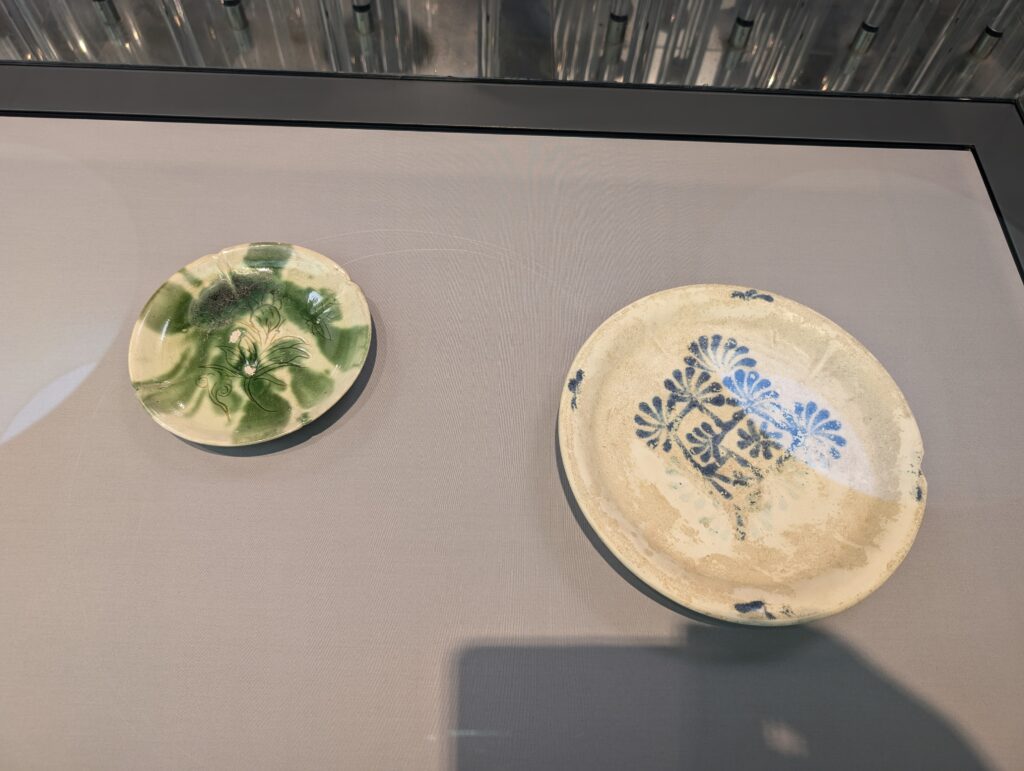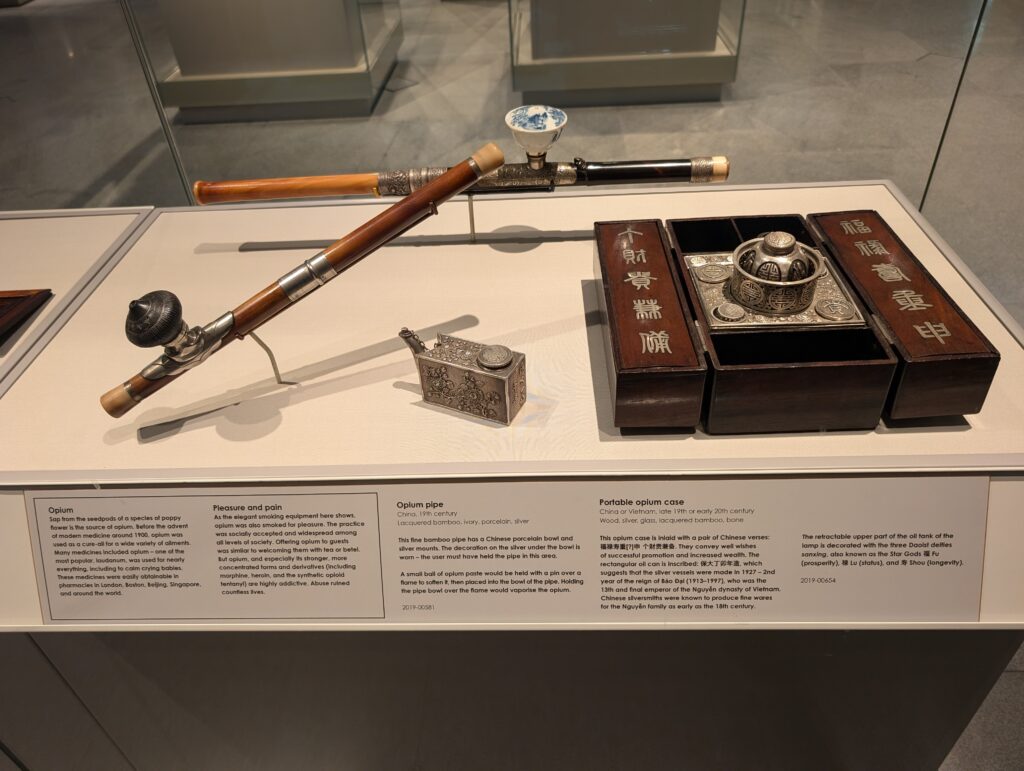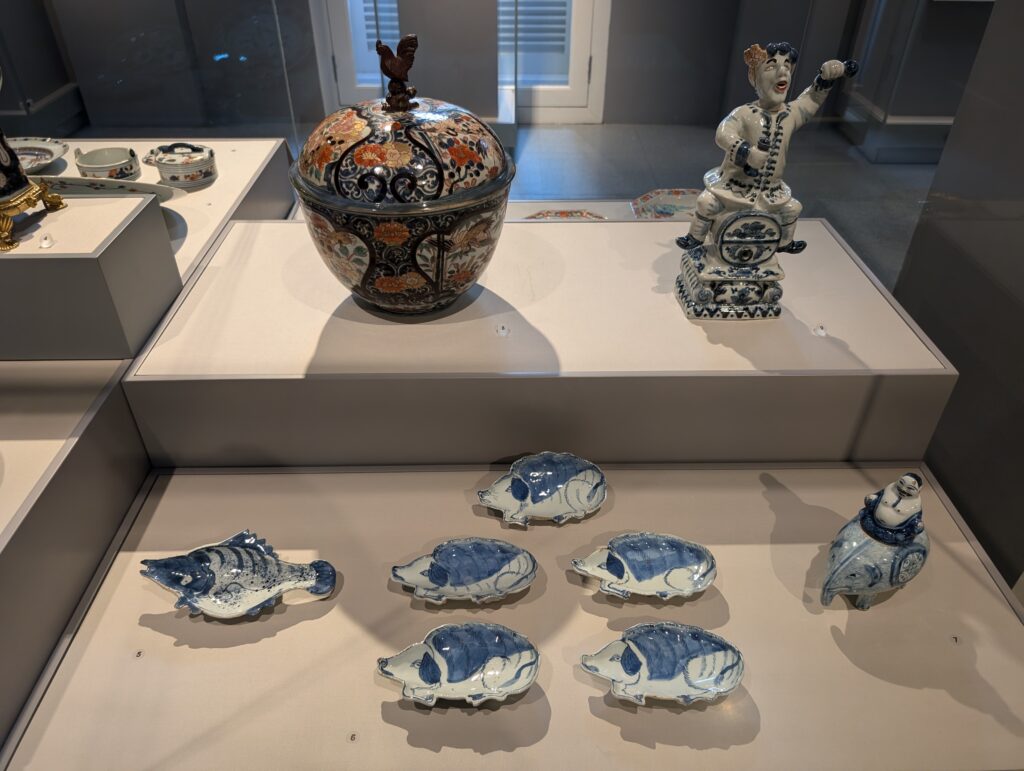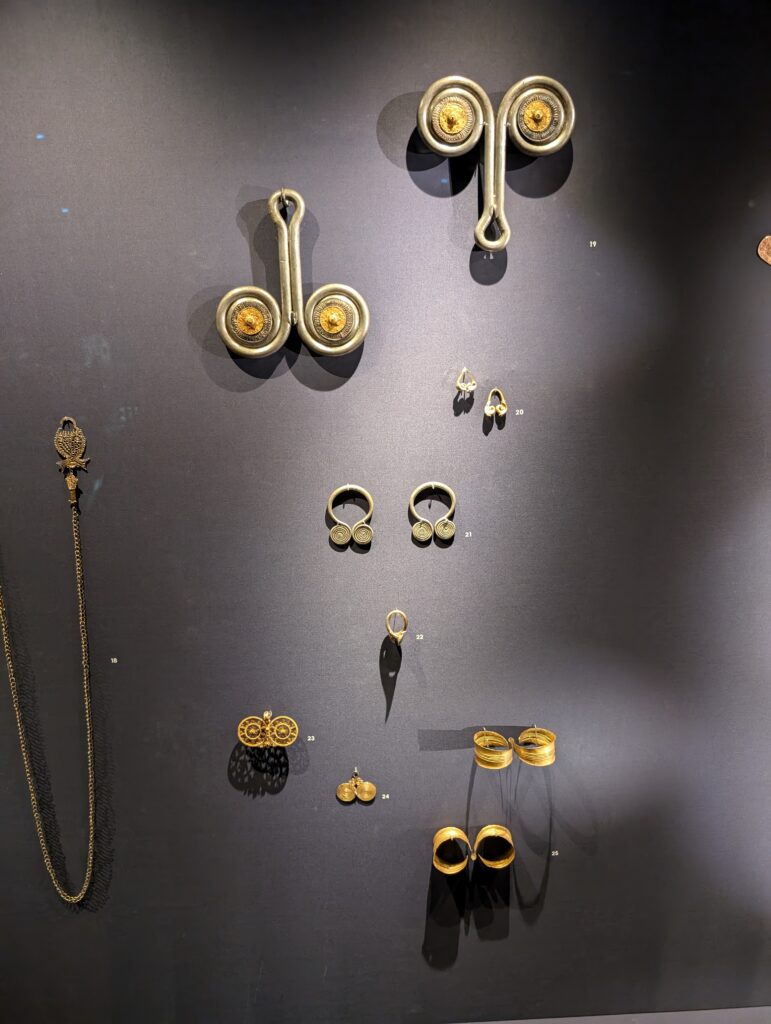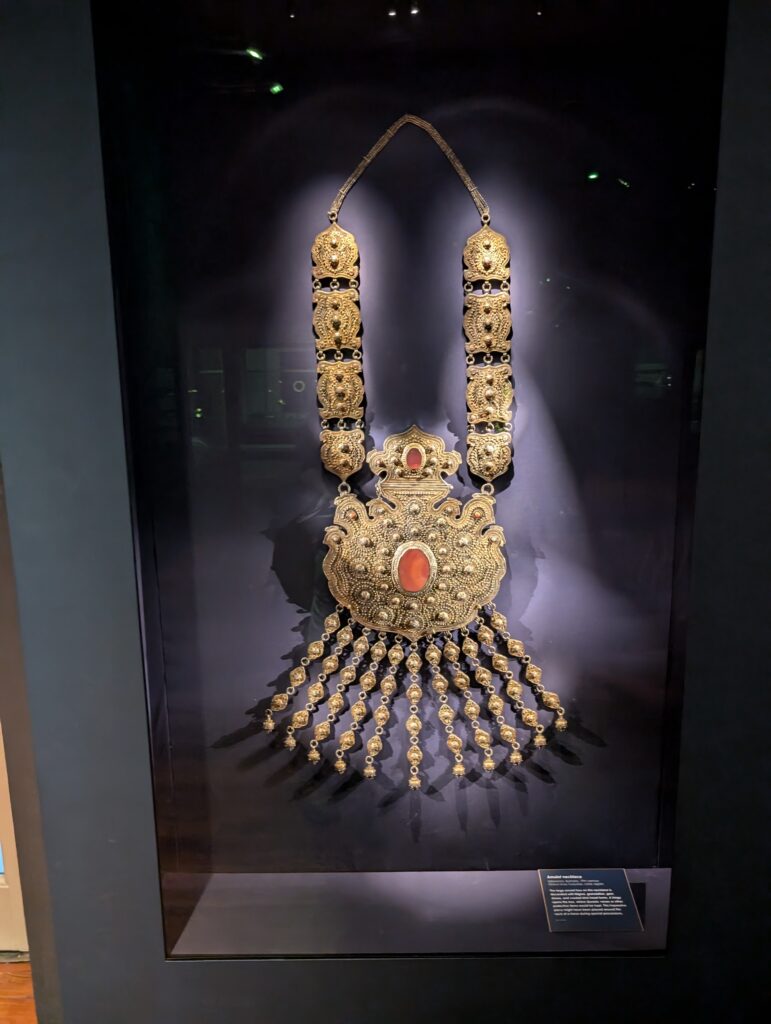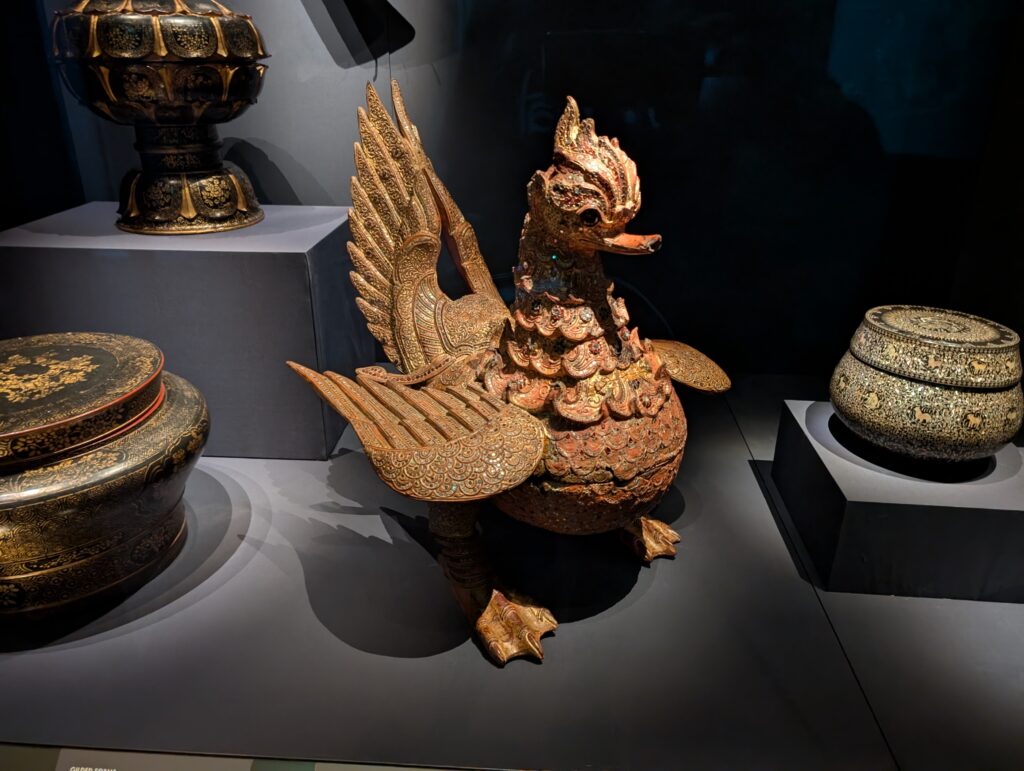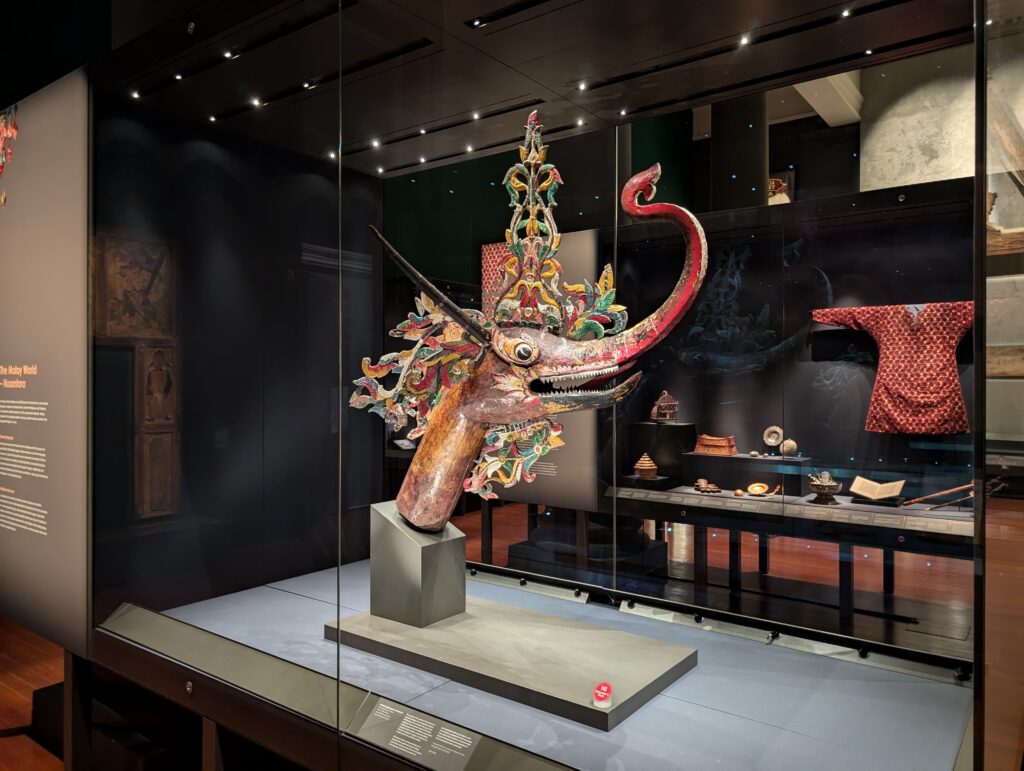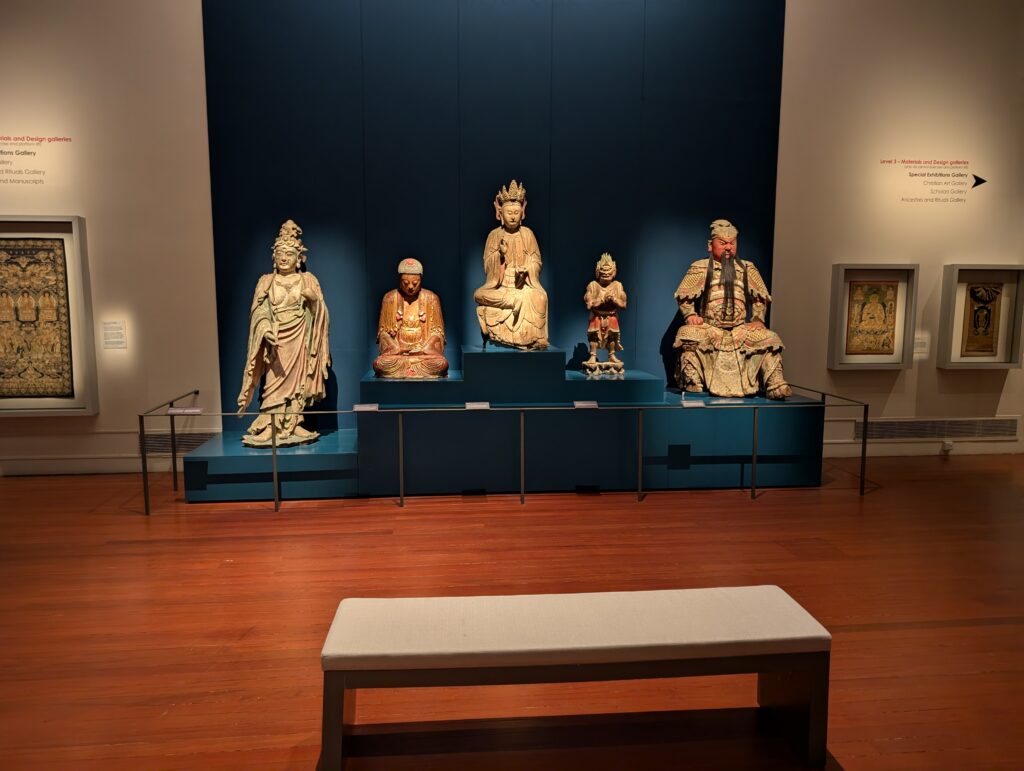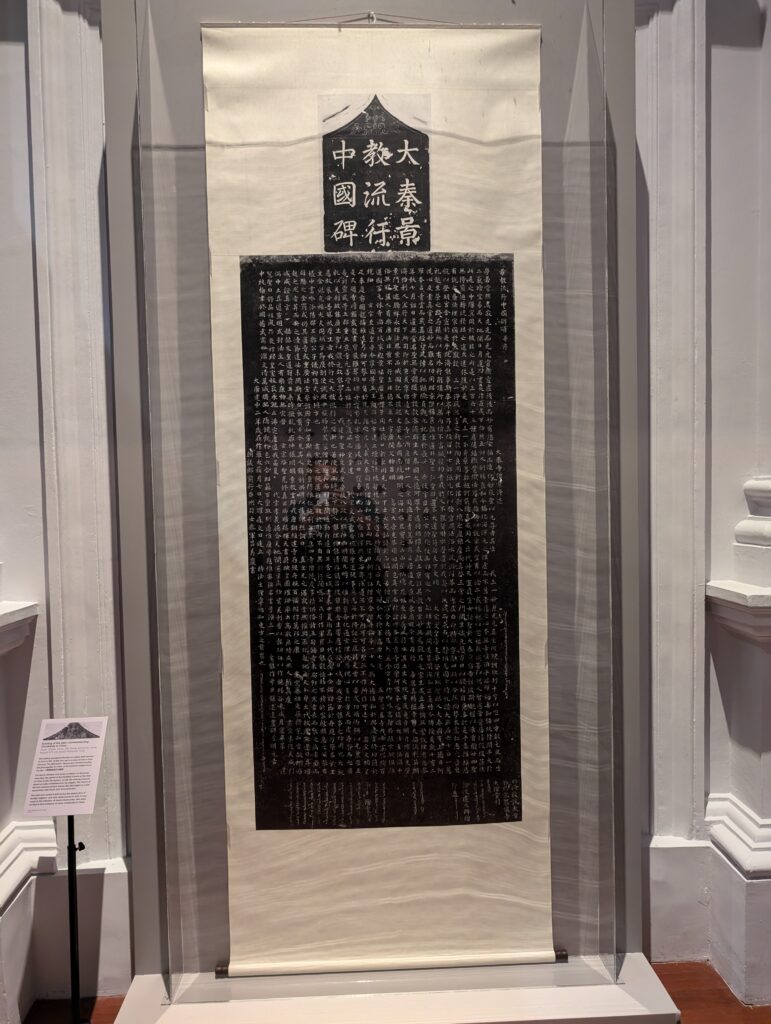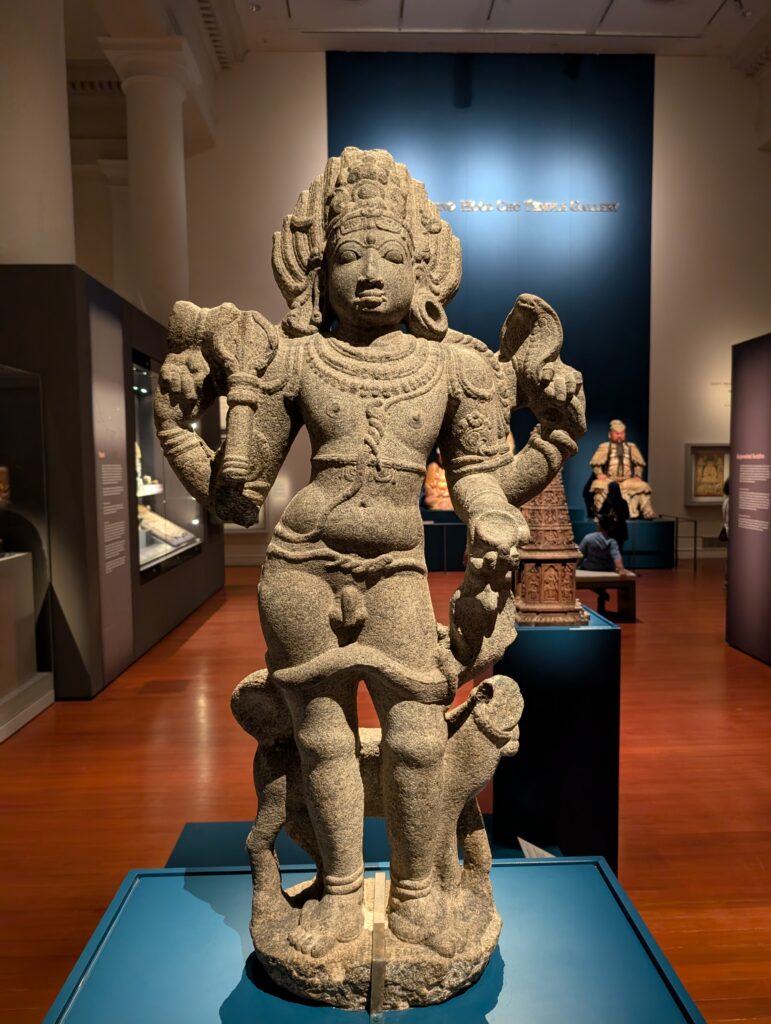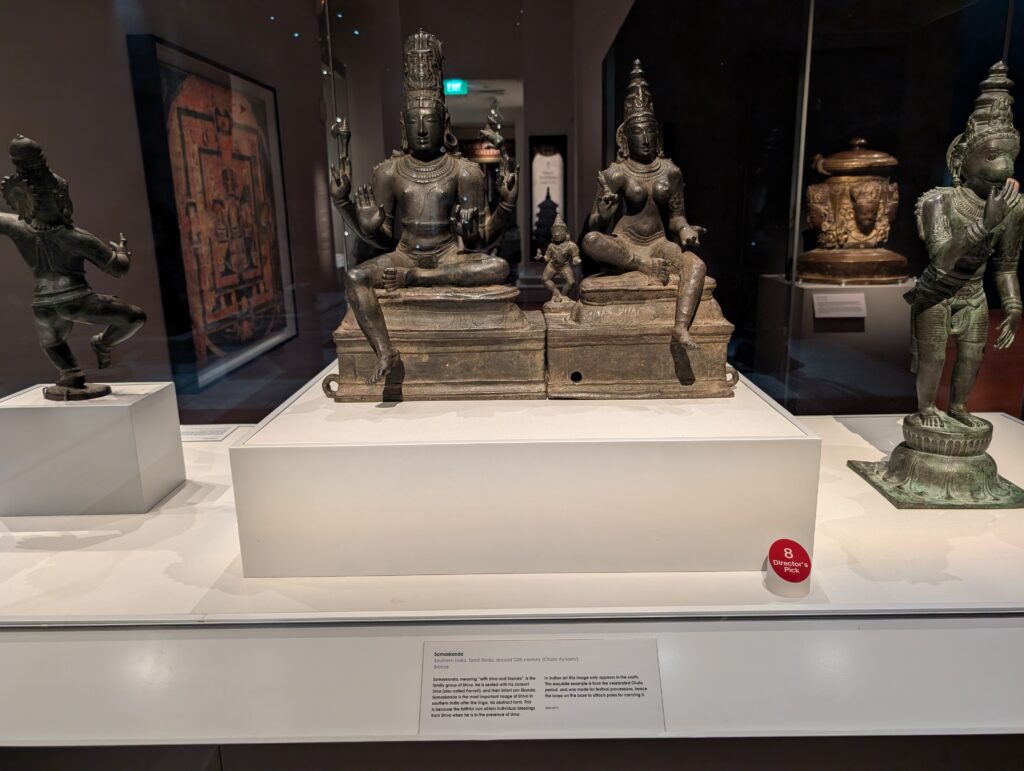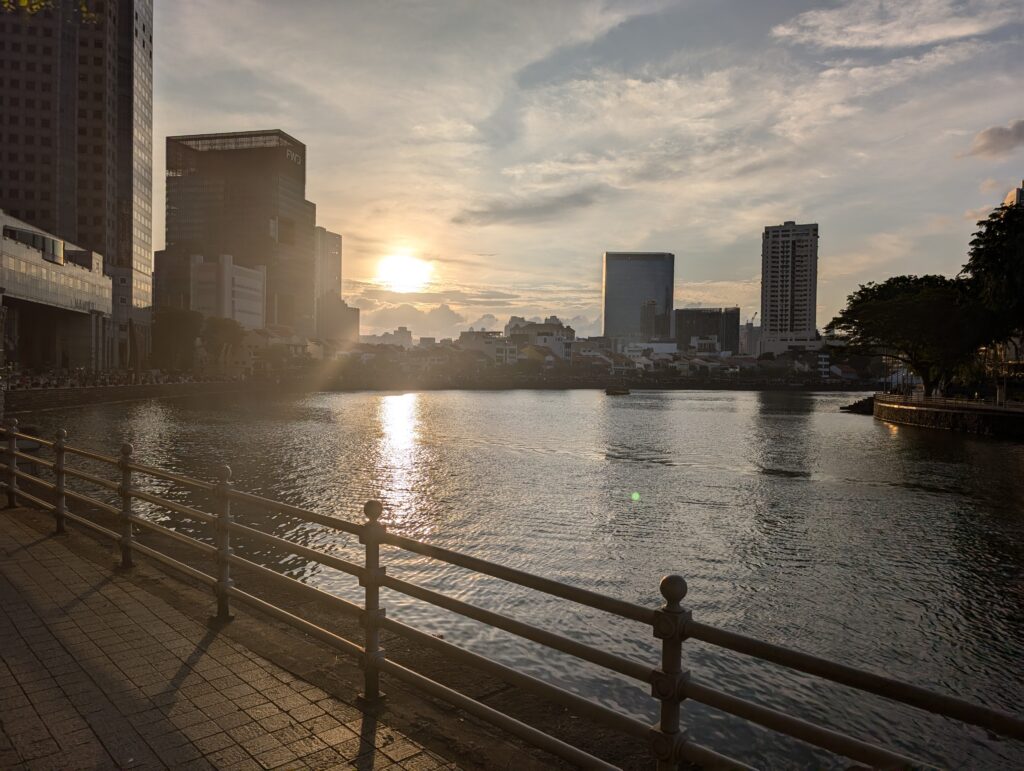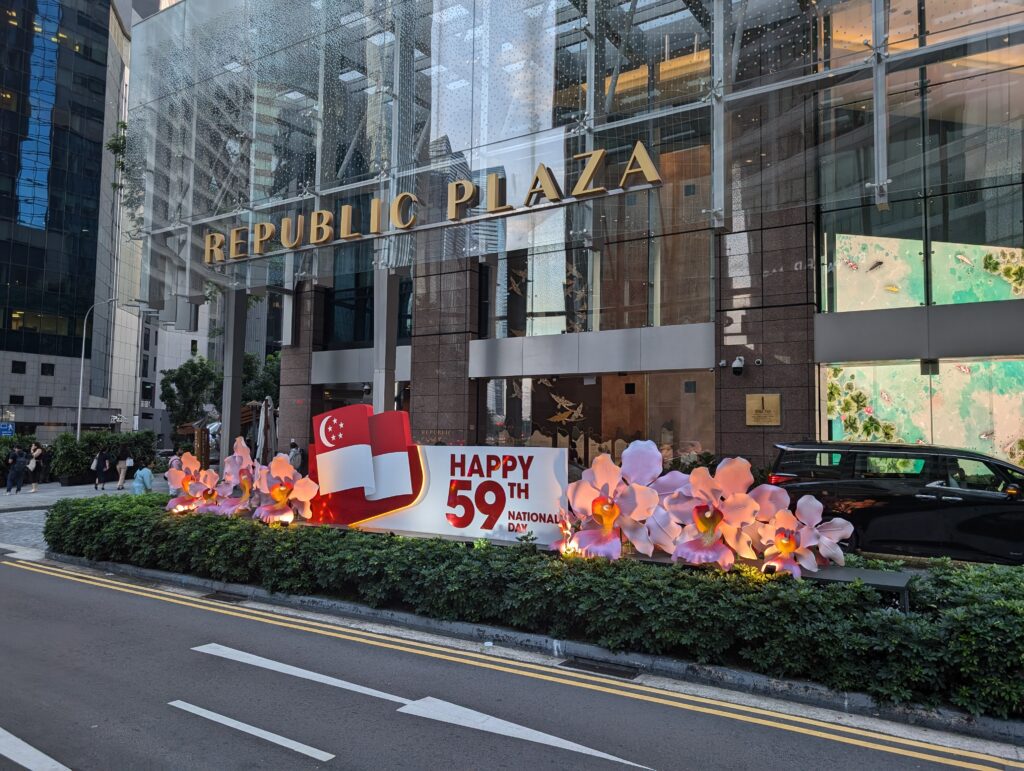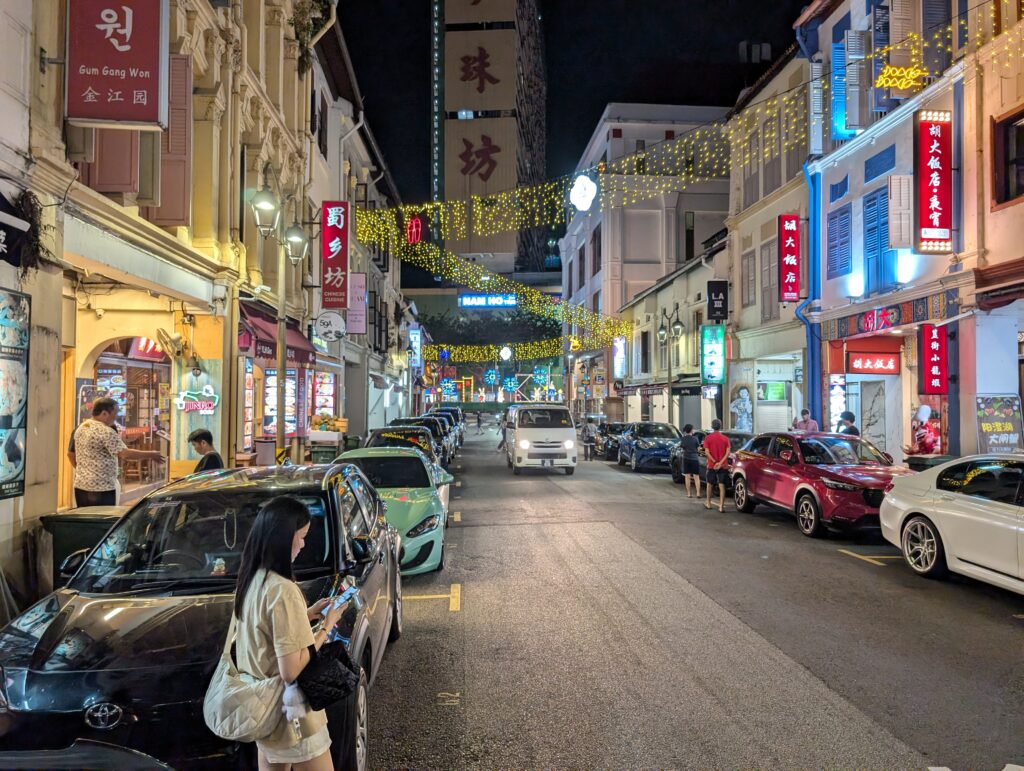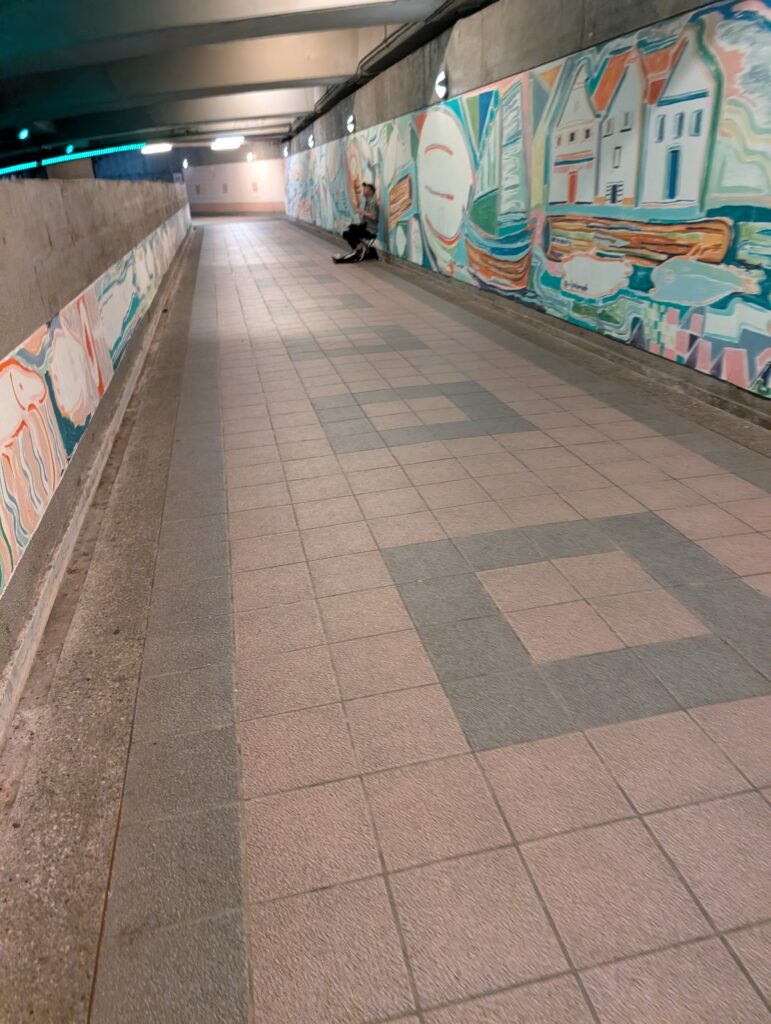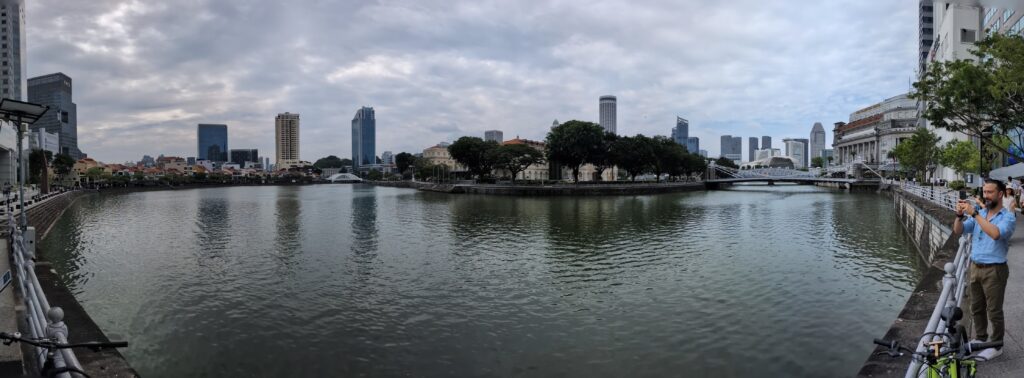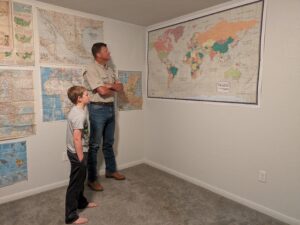Singapore
Strict Efficiency
Singapore has some crazy strict laws. It is illegal to spit on the sidewalk, import or chew gum, or fail to flush the toilet. You can be fined for any of these crimes. Shortly after I got out of college, an American kid was charged with vandalizing some cars and road signs. He was convicted and sentenced to be caned – a rather harsh for of corporal punishment that involves the “caner” taking a big running windup and whacking the perpetrator on the behind with a big stick. It’s more than your average spanking. They keep a doctor on hand to tend to the skin breakage in the aftermath. There was a huge uproar in the United States as this made headlines in all of the U.S. news outlets.
As often happens in American popular opinion, two diametric camps formed. One group thought the United States should step in on behalf of the American kid and prevent Singapore from implementing this arcane punishment on the boy. The other camp took a position about like they did on the Britney Griner matter. “The kid broke another country’s laws, let him face the consequences in their criminal justice system.” In the end, President Bill Clinton made a personal appeal to the government of Singapore, and in a completely unprecedented capitulation, the Singaporeans actually reduced the number of strokes from six to four, as a personal favor to Bill Clinton.
This appeased no one. The kid still got caned. His American supporters still believed the punishment arcane and unfair. Those who believed he should face the consequences in the Singaporean justice system were further shamed by the fact that the U.S. government would ask for an exception. Singaporeans were disgusted that their government compromised its principles at the behest of a powerful foreign politician. It made good news fodder back then, in the early days of 24 hour news.
Singapore’s eccentric system of laws and punishments has served it well. While you can be fined S$7,000 if you are caught importing chewing gum, you never encounter the disgusting residue of someone’s failure to properly dispose of the stuff on the city’s streets or public transportation. Singapore has one of the lowest crime rates in the world. It is an extremely modern, clean, efficient place.
Necessity has been the mother of many of Singapore’s eccentric inventions. It is the only nation in the world to have been involuntarily pushed into independence, and yet retained its sovereignty. It is a city of six million people on an island that it its own country. Urban land use planning is a must. Despite its urban nature and tiny size, Singapore has a beautiful parks and green spaces. Despite a large concentration of people, Singapore has gone from an agricultural to an industrial, to a tech and finance based economy, all since it was devolved as a crown colony in the 1950s. That kind of close planning and rapid development probably couldn’t have ever worked so effectively in places like the United States or China – not just for cultural or ideological reasons, but primarily due to the size and diverse populations of those larger countries. In other words, Singapore is very proud of itself for finding answers to its own special problems. They have been extremely successful in making Singapore extremely successful. But those solutions likely would not be effective anywhere but Singapore. It is truly a unique place.
(Continued)

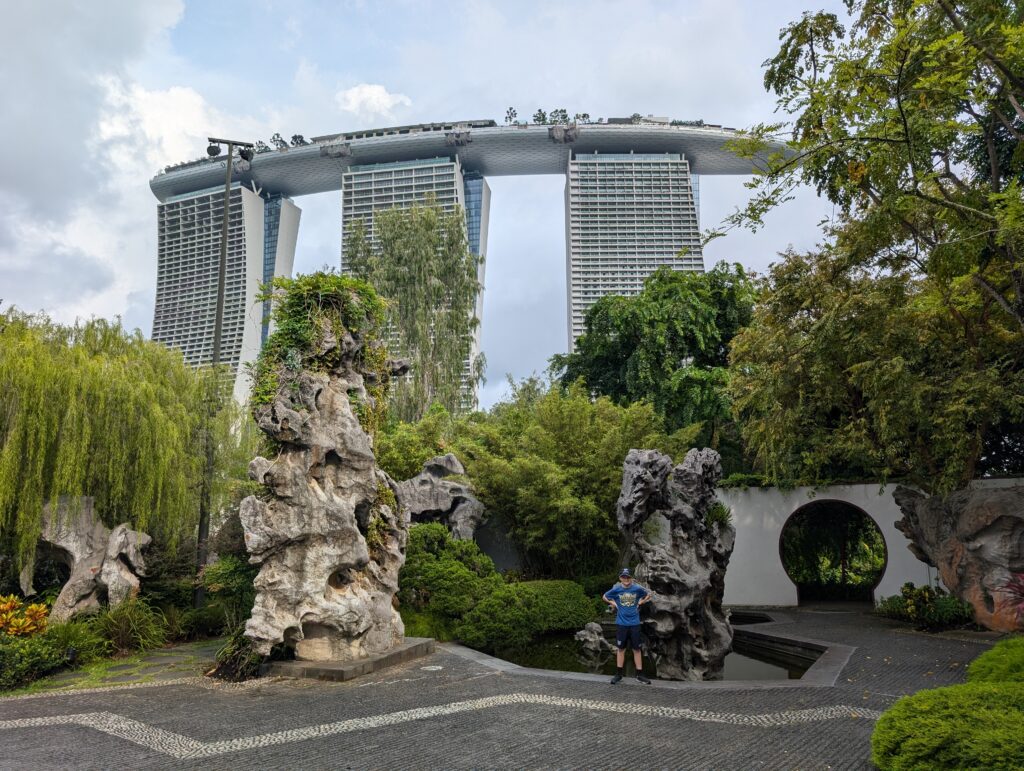
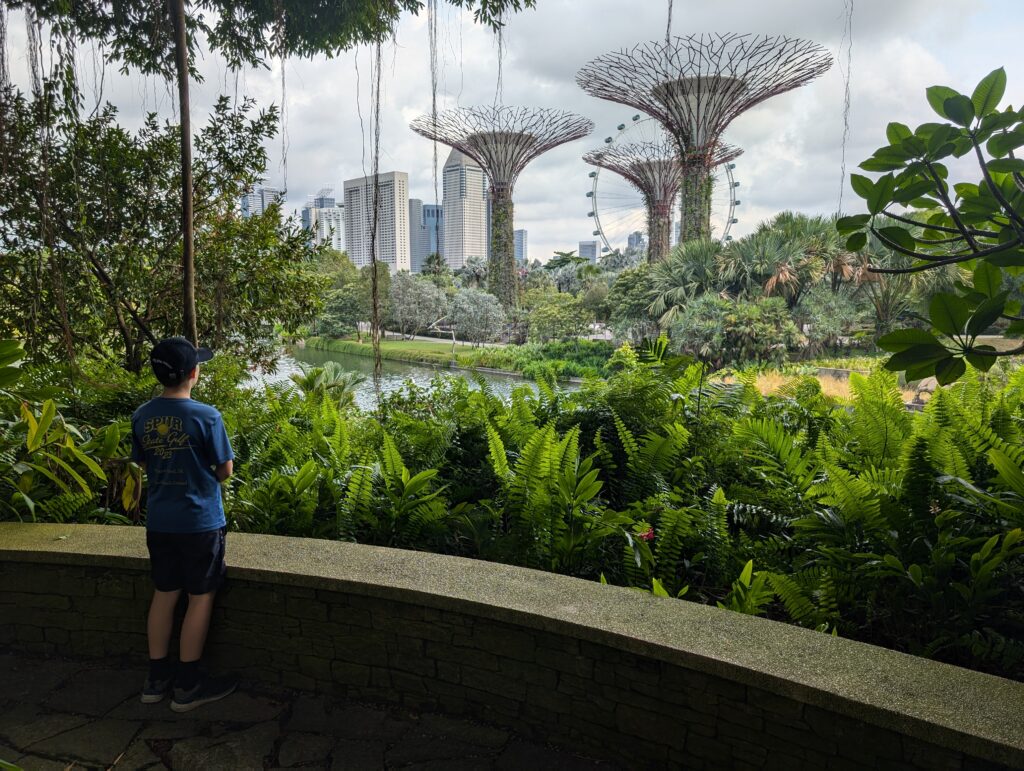
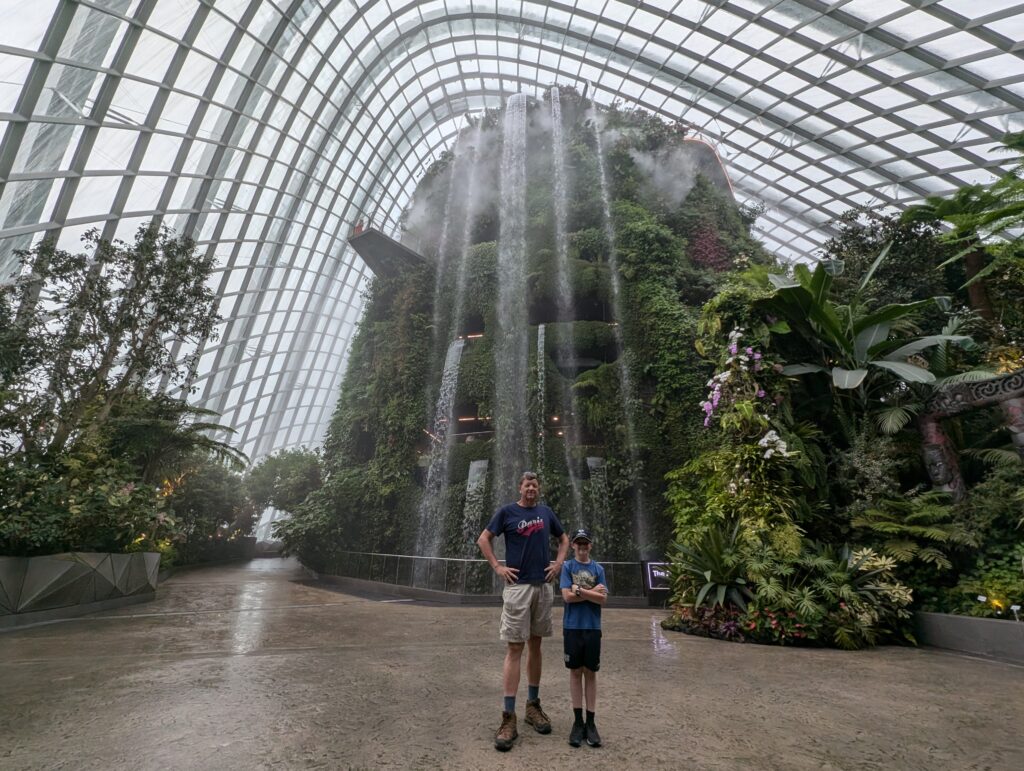

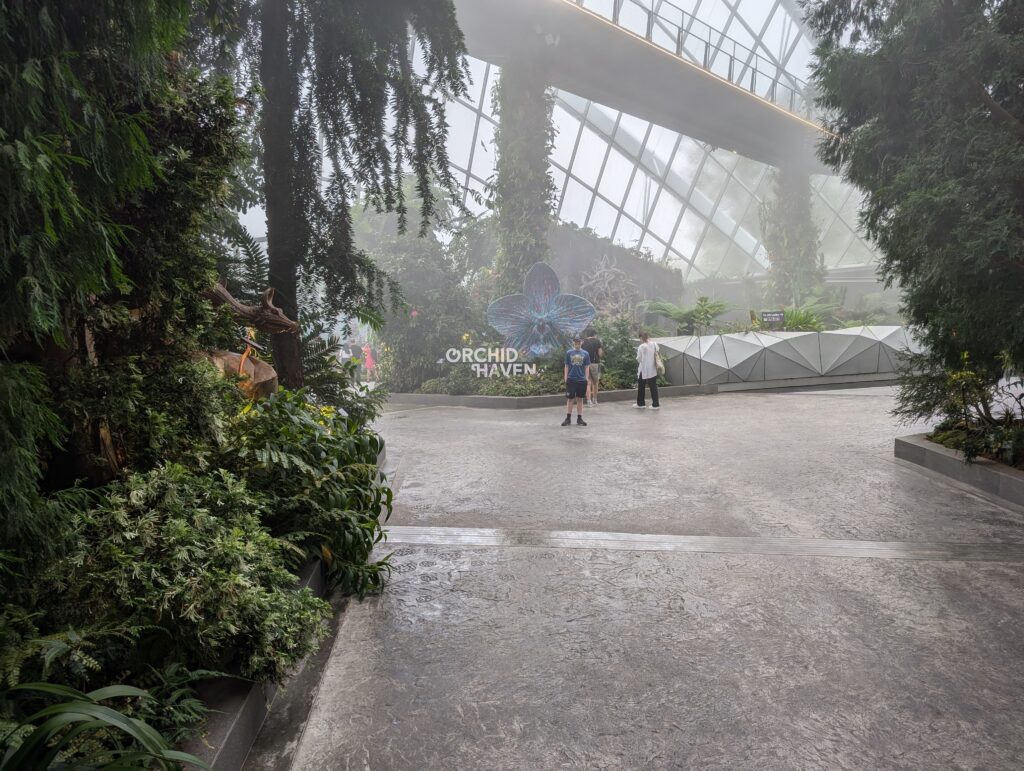
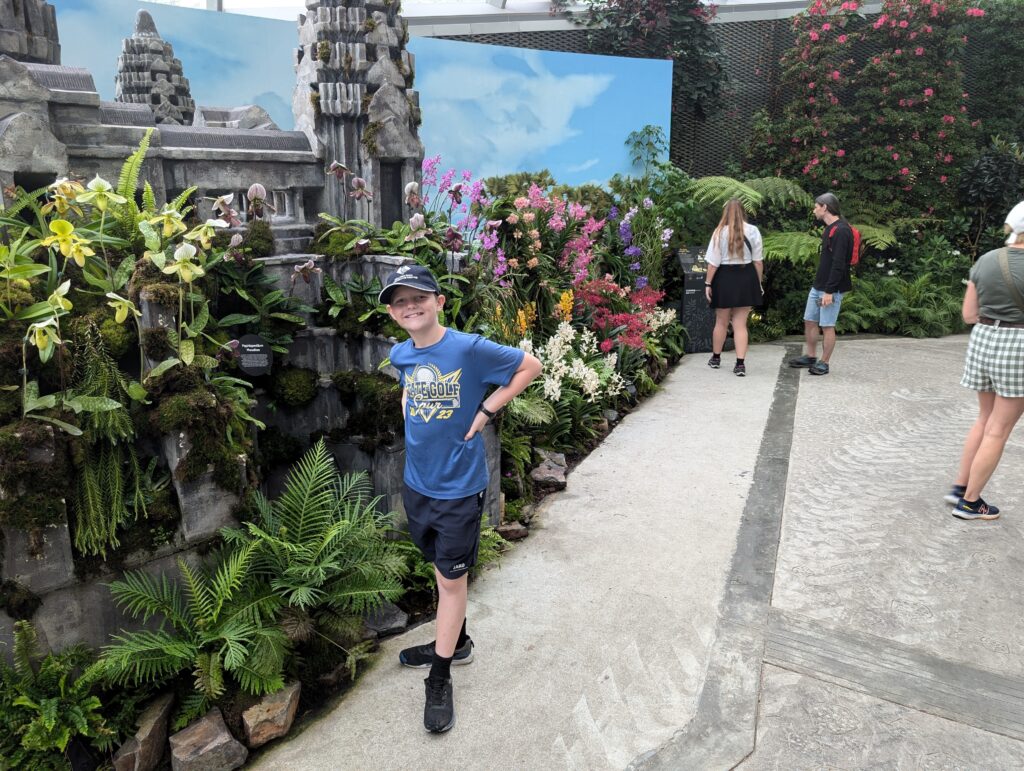
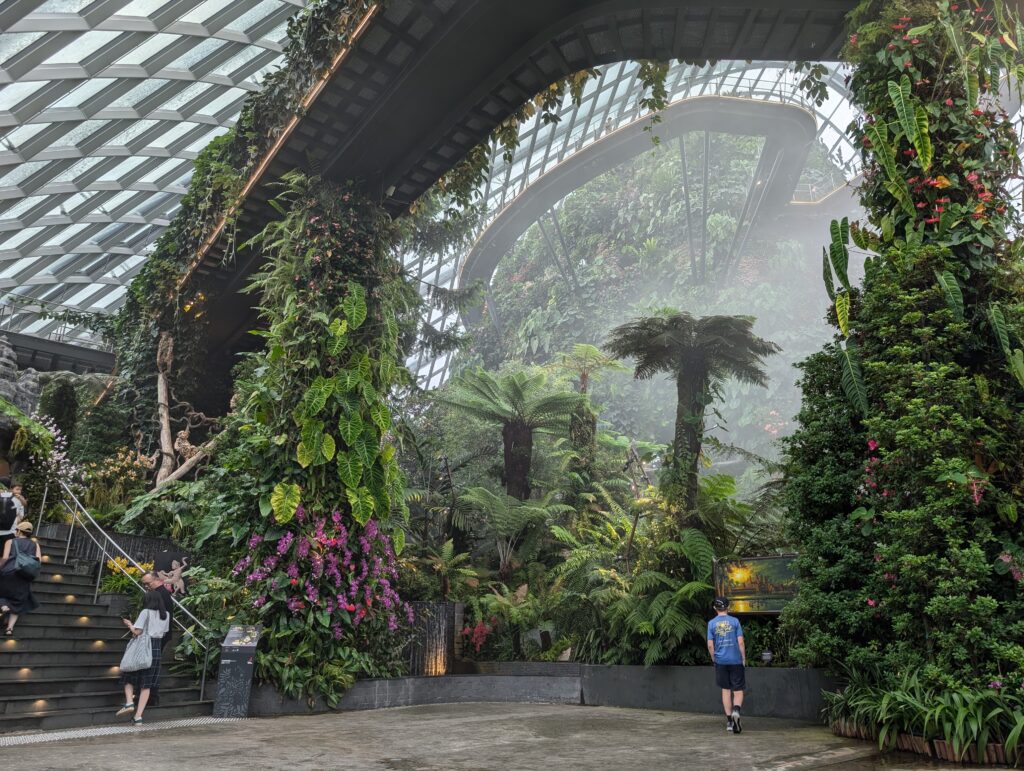
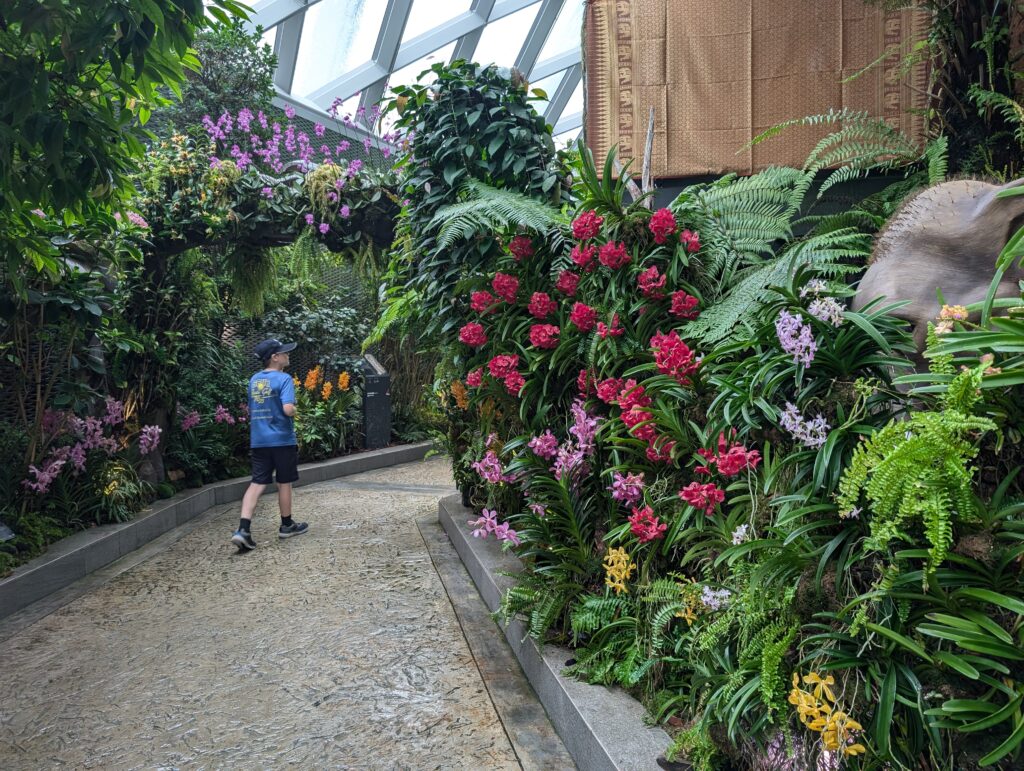


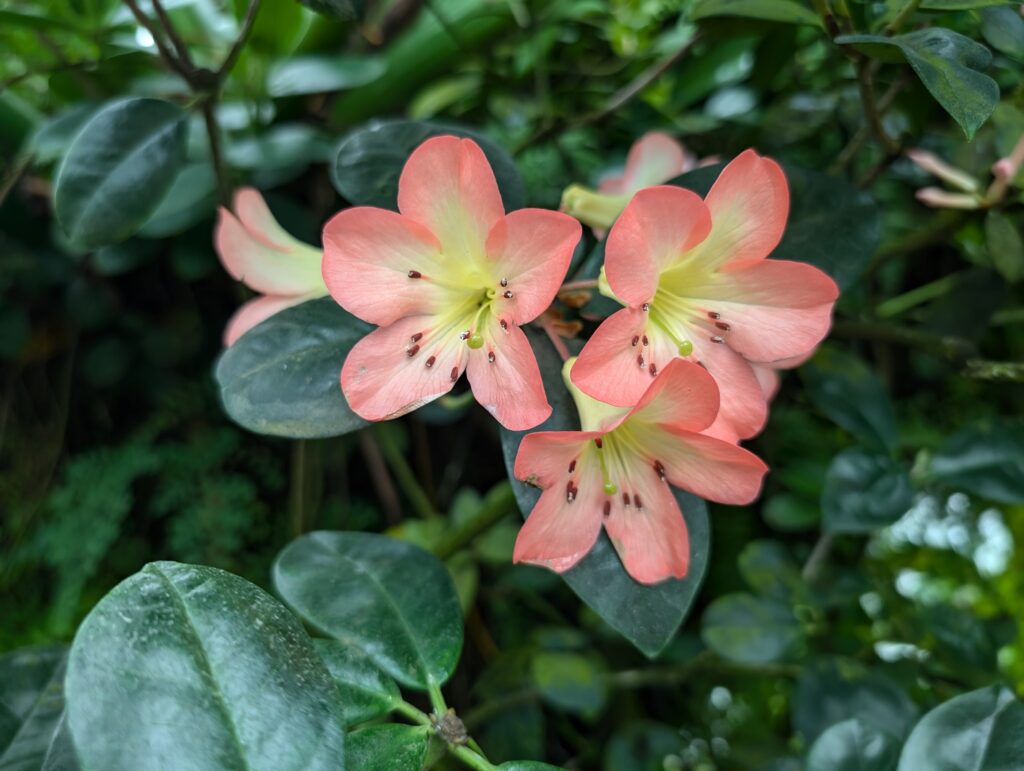
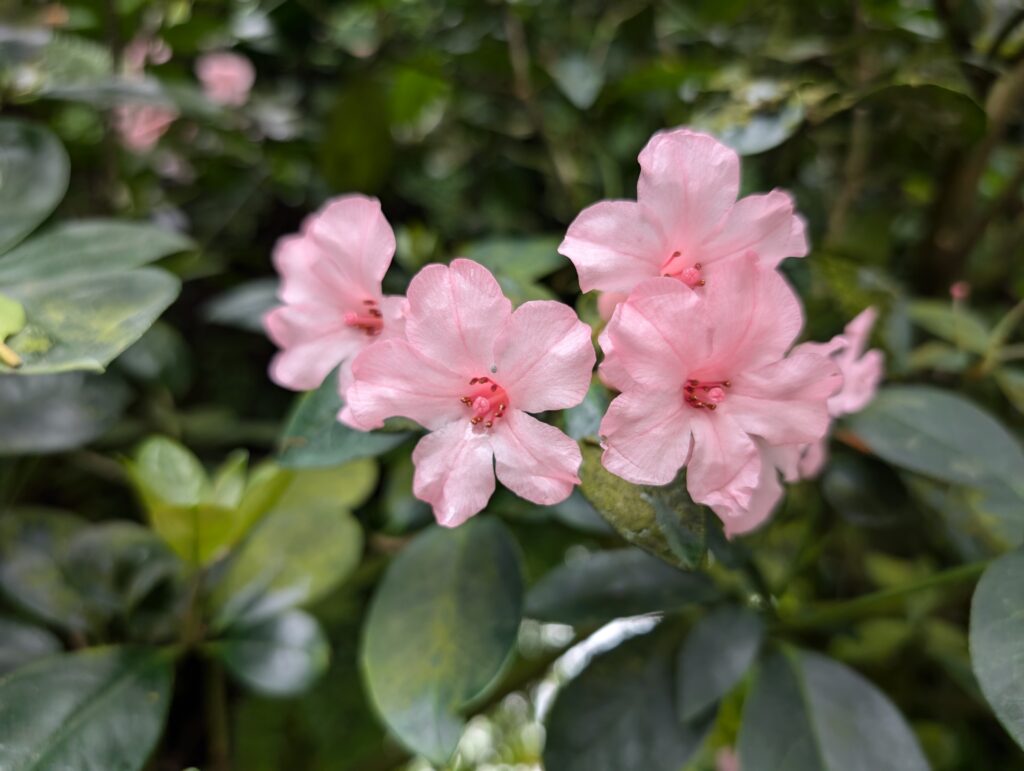

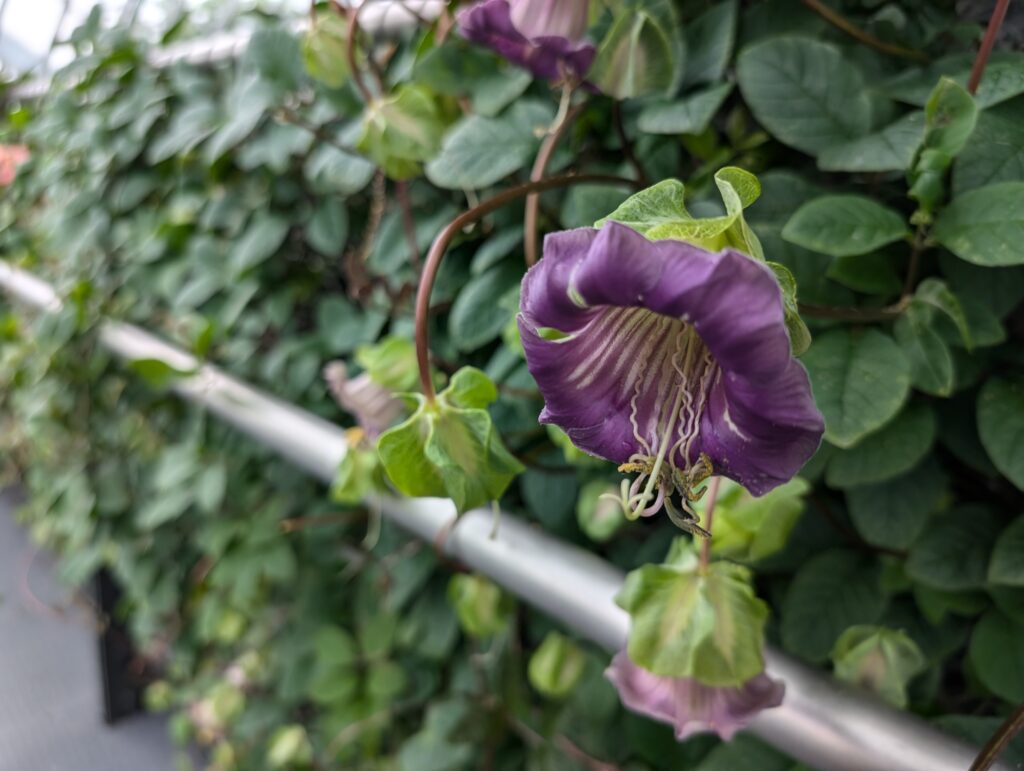
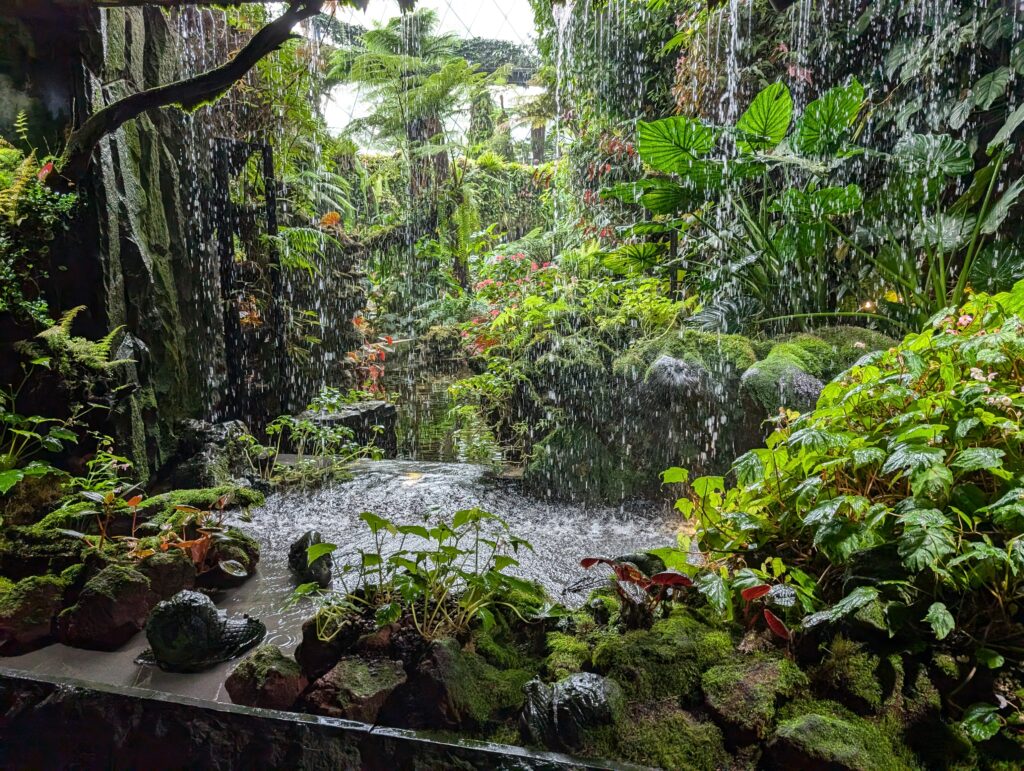
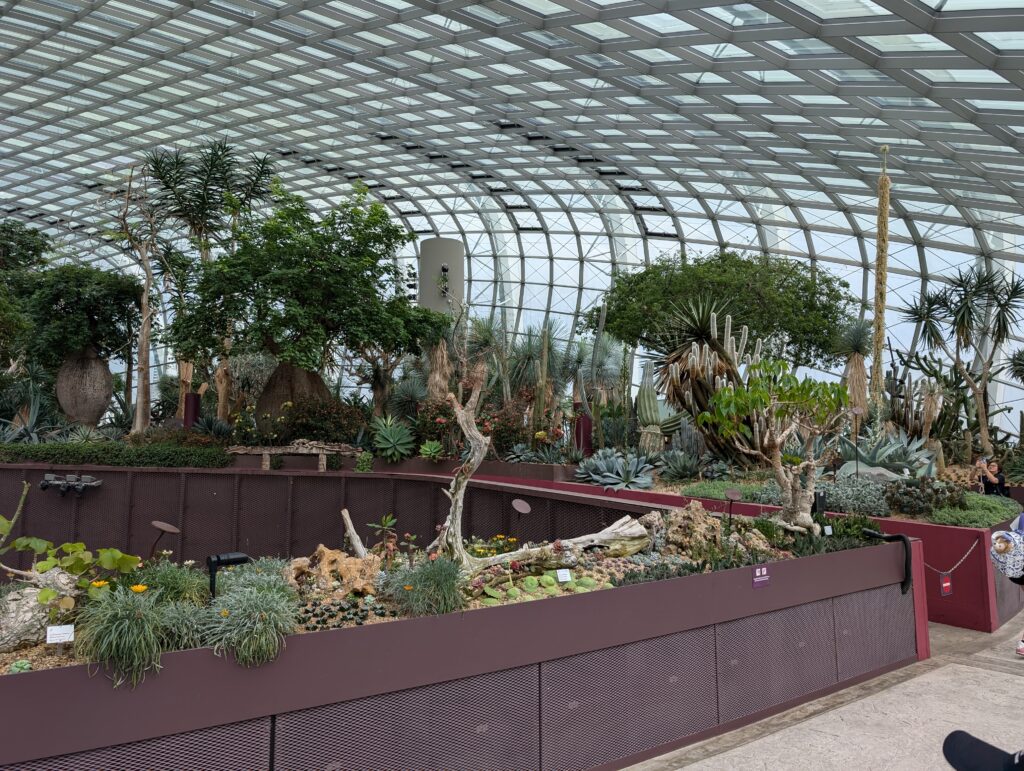




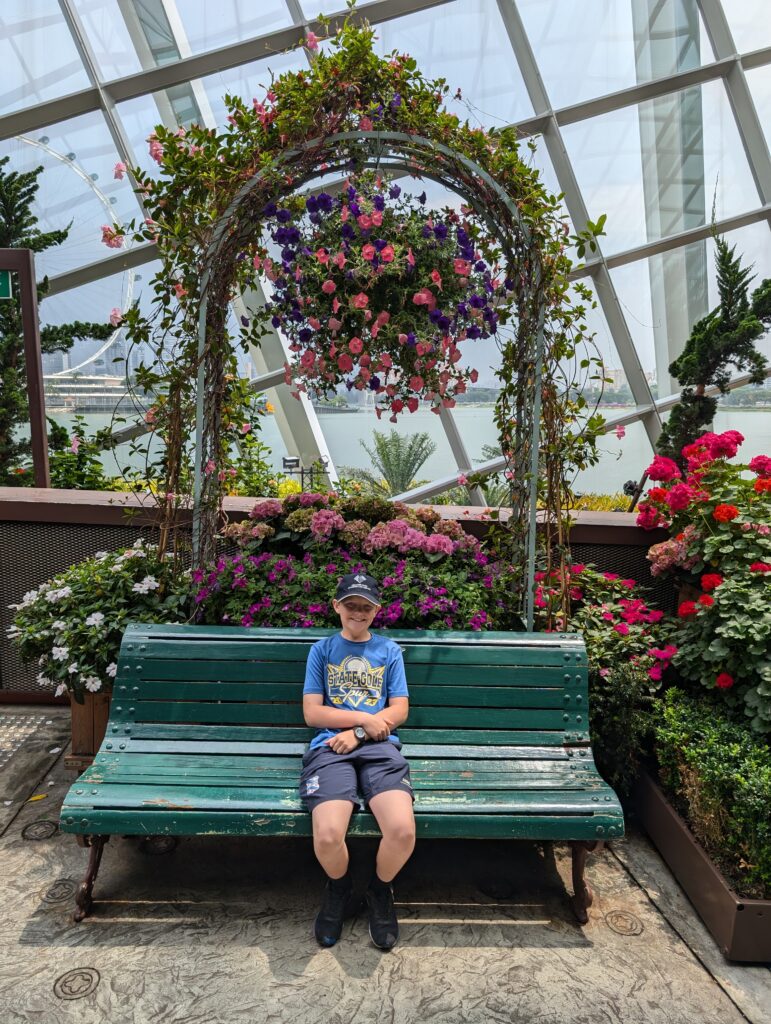
Our bus to Singapore was not efficient, but then, it was a Malaysian bus. We were slated for a five hour trip from Kuala Lumpur to Lavender Square. The trip took eight and a half hours. I suspect the driver was on drugs. He talked loudly and erratically to I don’t know who the entire trip. He sometimes drove in circles. He stopped twice within 15 minutes for fuel. We eventually were sent a different bus and driver. The second bus’s seats were all broken down and we were told nothing about why we were asked to change, other than that it was a “better bus.” So while we expected to reach our hotel between five and six, it was after nine before we arrived. We strolled around the corner for some Chinese food and called it a night, glad to be at our final international stop with a few days to see the city at our leisure.
Our first tourist stop was the Gardens by the Bay. This park is a highly developed green space very near the coast right next to the iconic Marina Sands Hotel, an attraction in its own right. Gardens by the Bay features two indoor domes. One houses a cloud forest, complete with waterfall, and climate specific plants from cloud forests around the world. You can walk the bottom in the cool air, or climb up to walk through the waterfall. The second dome is a floral display. We were overwhelmed by the diversity of the plants and their bright colors. There was a special display when we visited dedicated to Claude Monet, who was famous for painting scenes from what I would call “controlled nature” – prepared landscapes like his garden, as opposed to the unharnessed great outdoors. The displays of Monet’s works were just replicas, so we spent less time on those than the flowers themselves.
The park itself runs over a kilometer in every direction, with outdoor sections replicating garden styles from other parts of the world. This park is also home to the famous “super tree grove,” of artificial trees that light up at night. We ascended the tallest of these and spent half an hour gazing at the straits, the barges, and the city skyline from this bird’s eye view.
In an effort to maximize Caleb’s waking hours and minimize the time we spent outside in the hottest part of the afternoon, I decided to try putting Caleb down for a nap shortly after lunch. This did not work well initially, because I tried to work while he was sleeping. So he did not sleep, and played games on his phone for an hour. After this, I returned and stared at him until he fell asleep. Apparently he needed this, because he did not wake for three an a half hours.
(Continued)
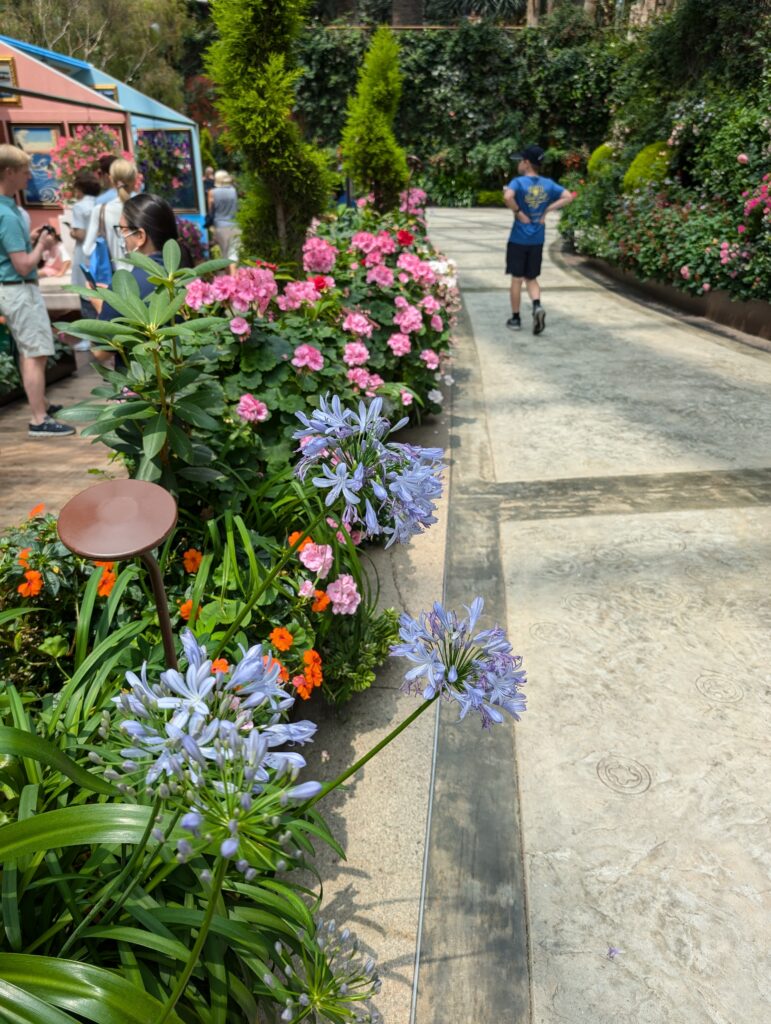
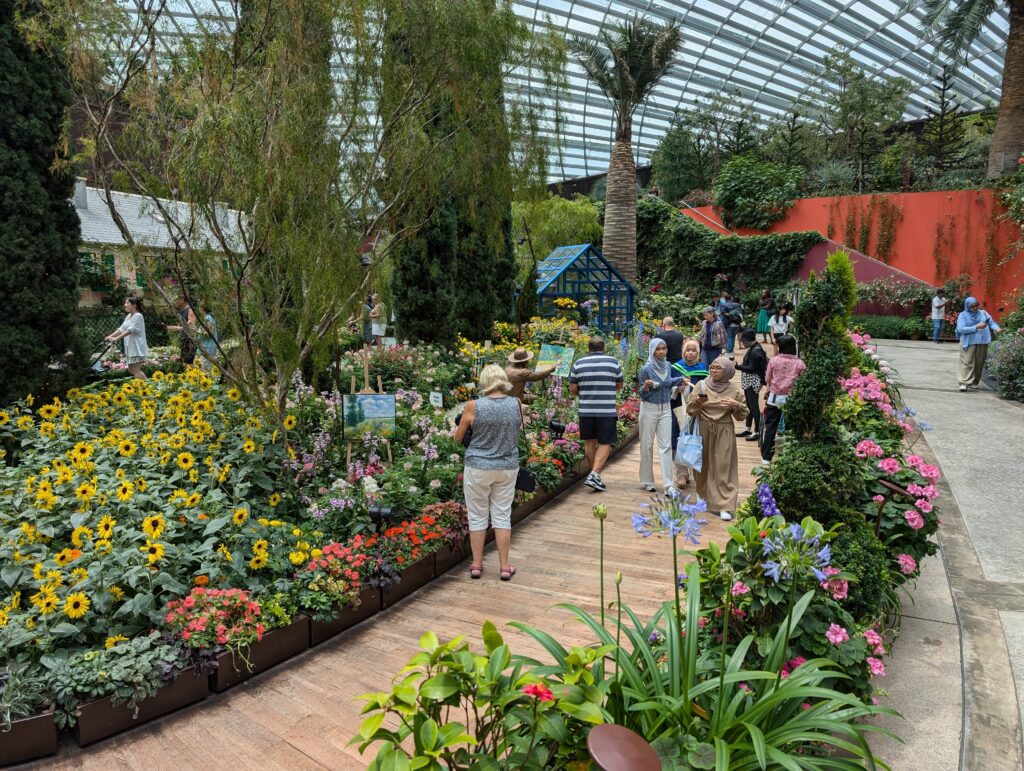

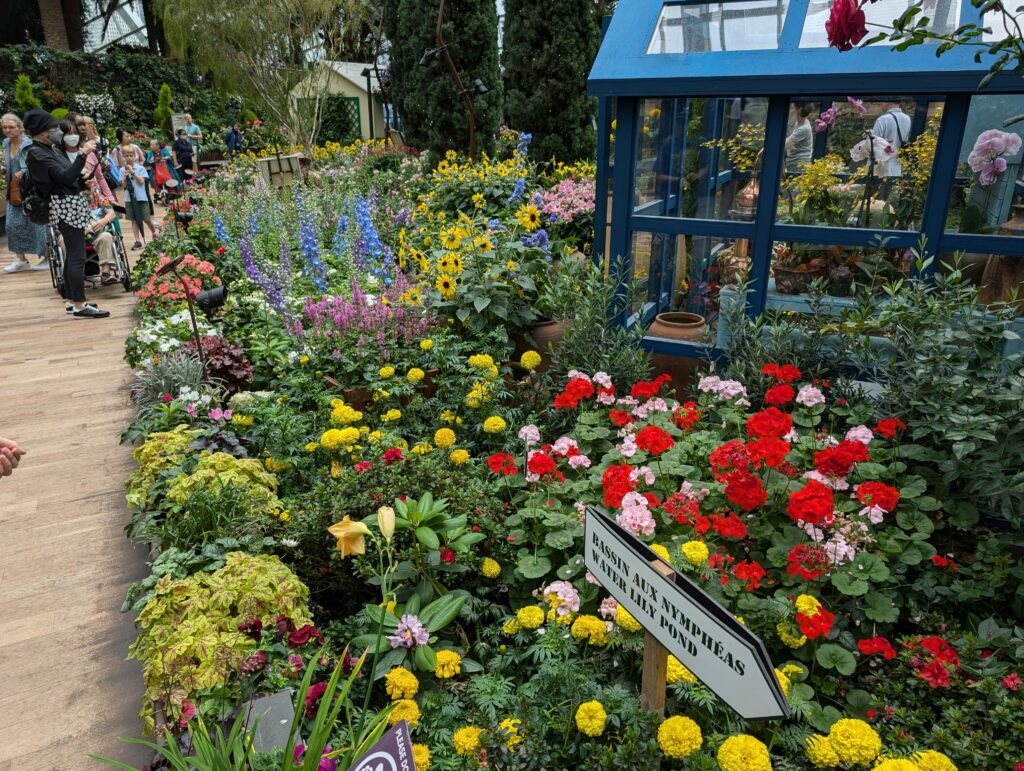

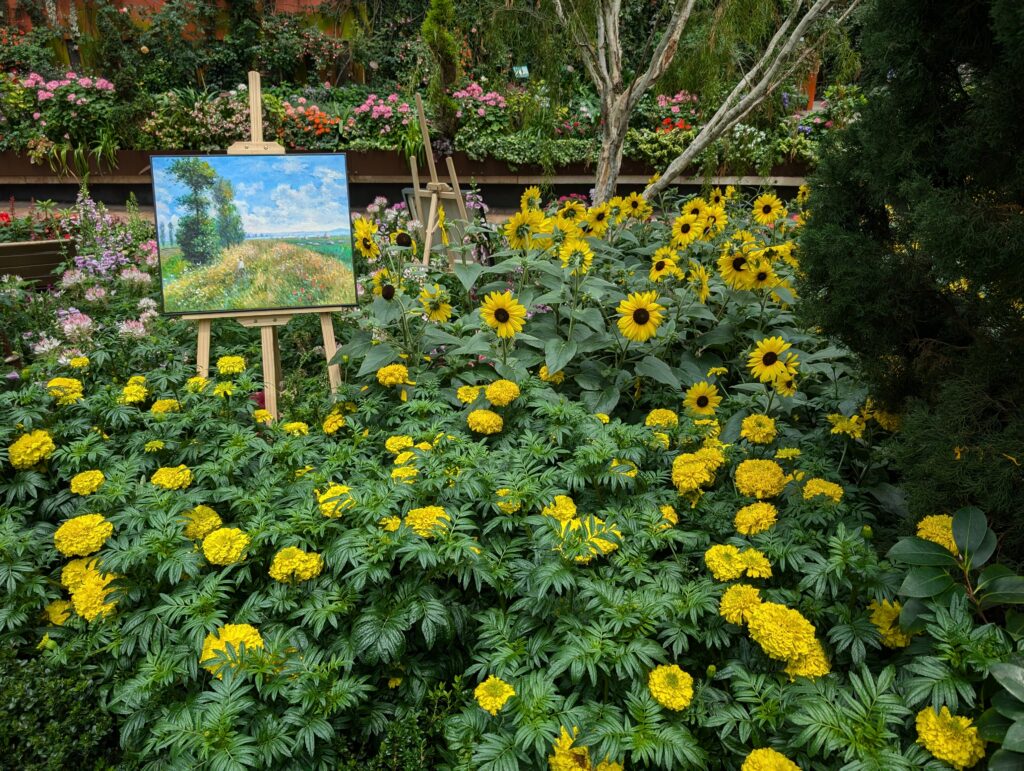
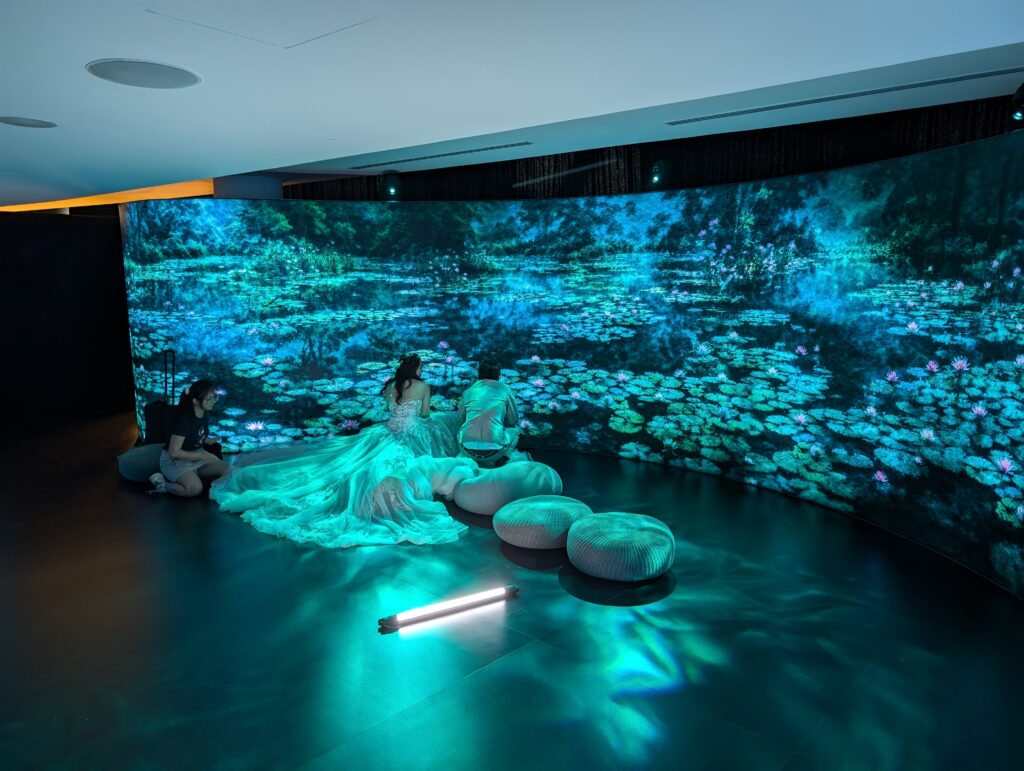
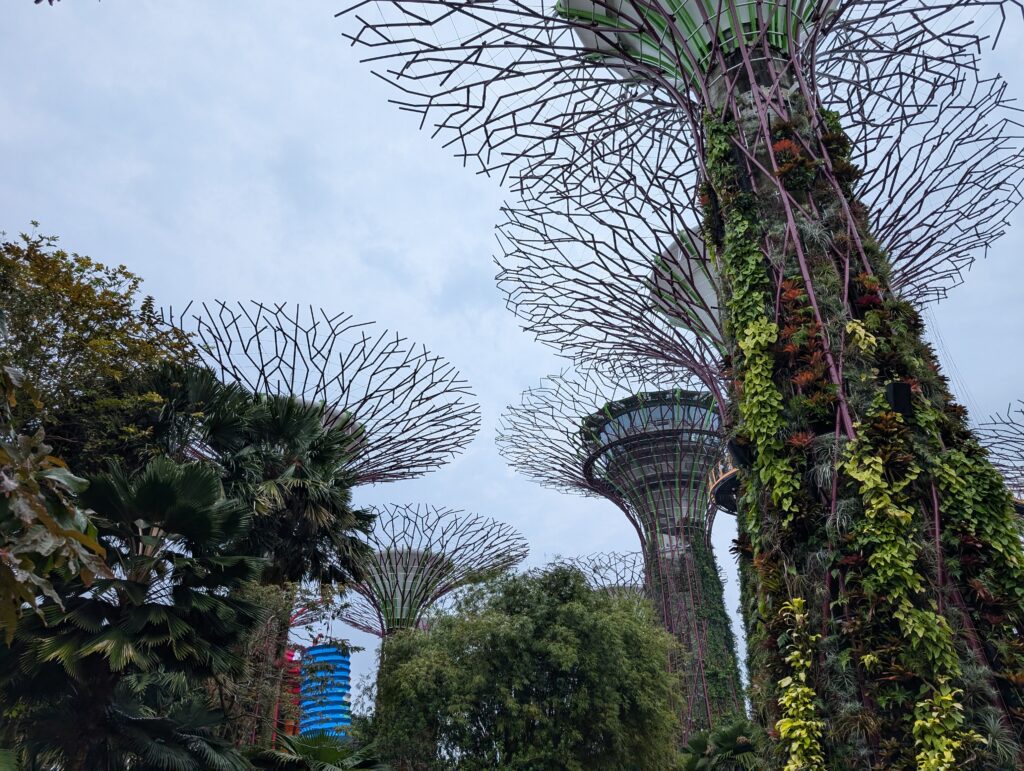
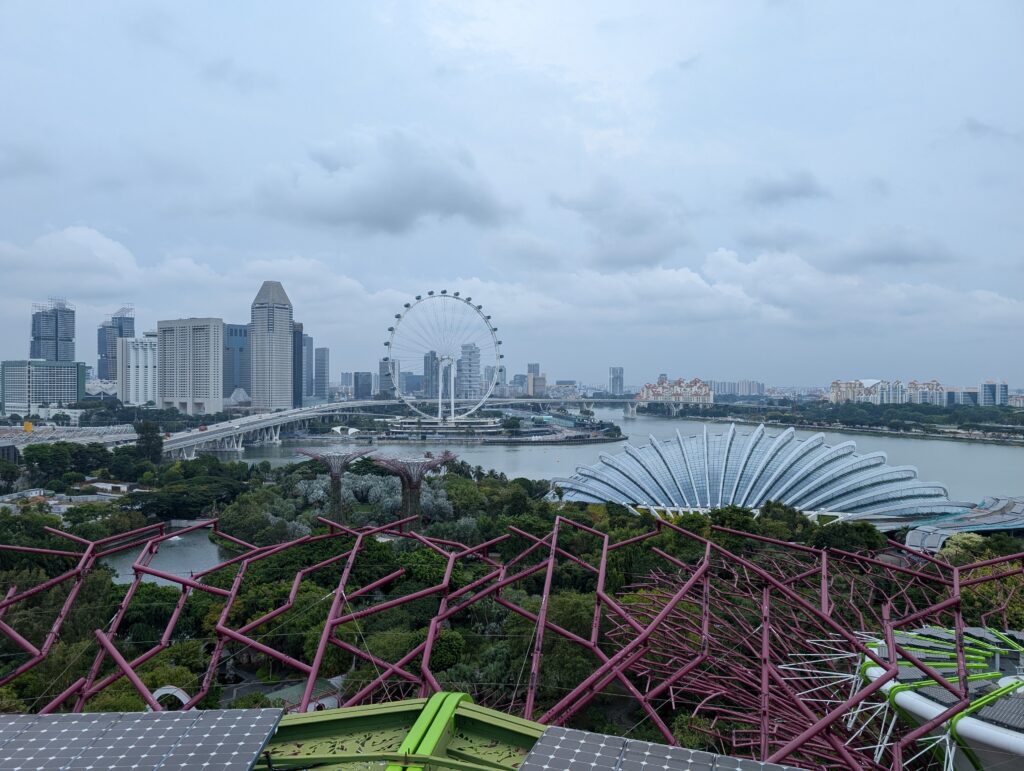
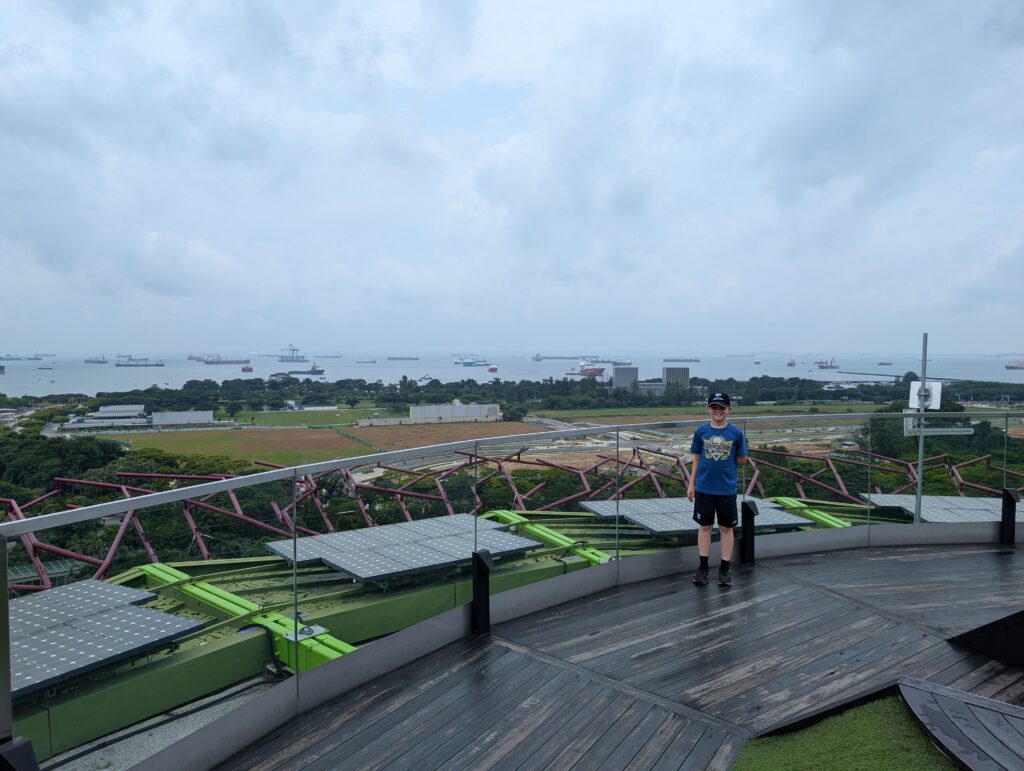
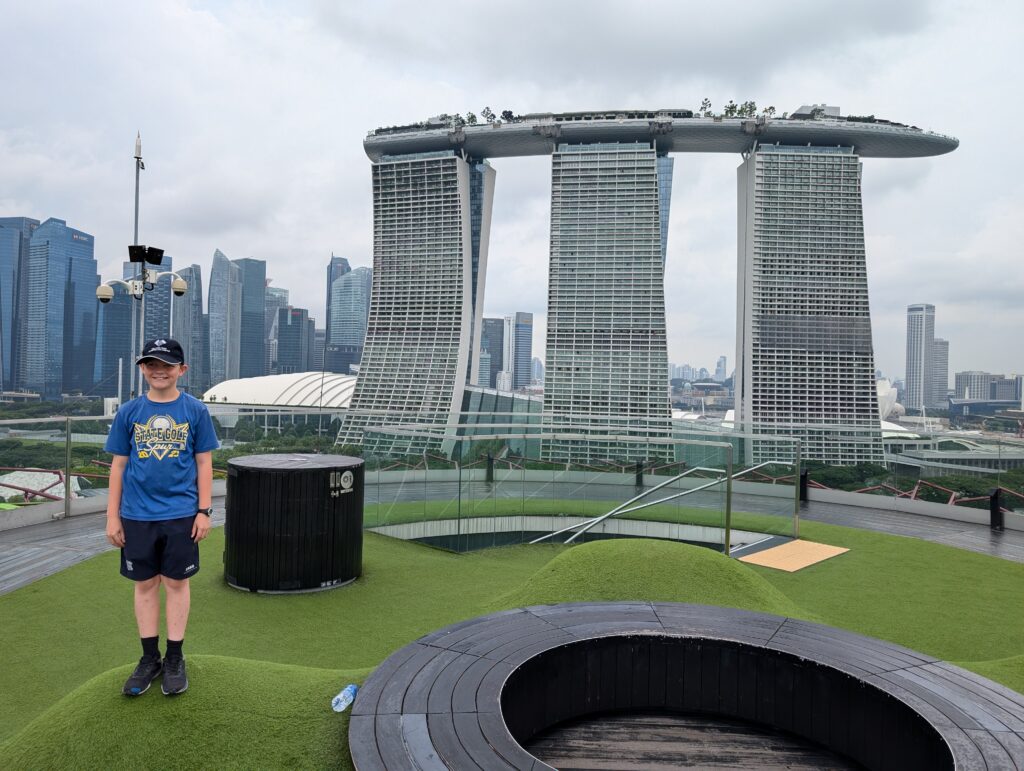
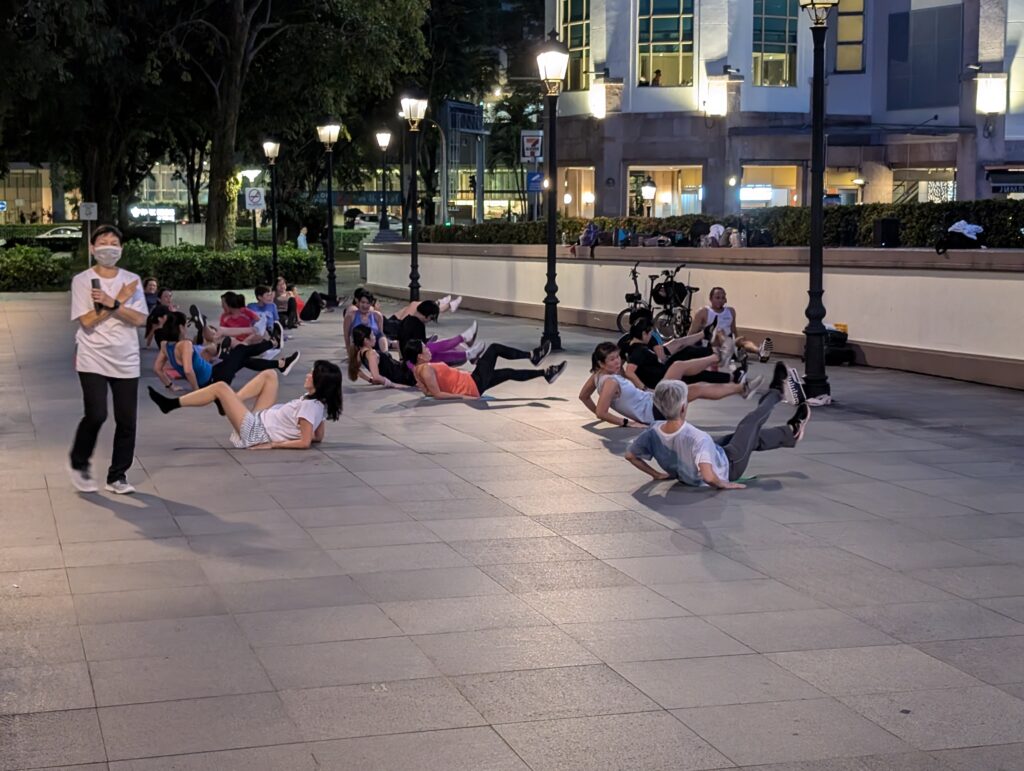
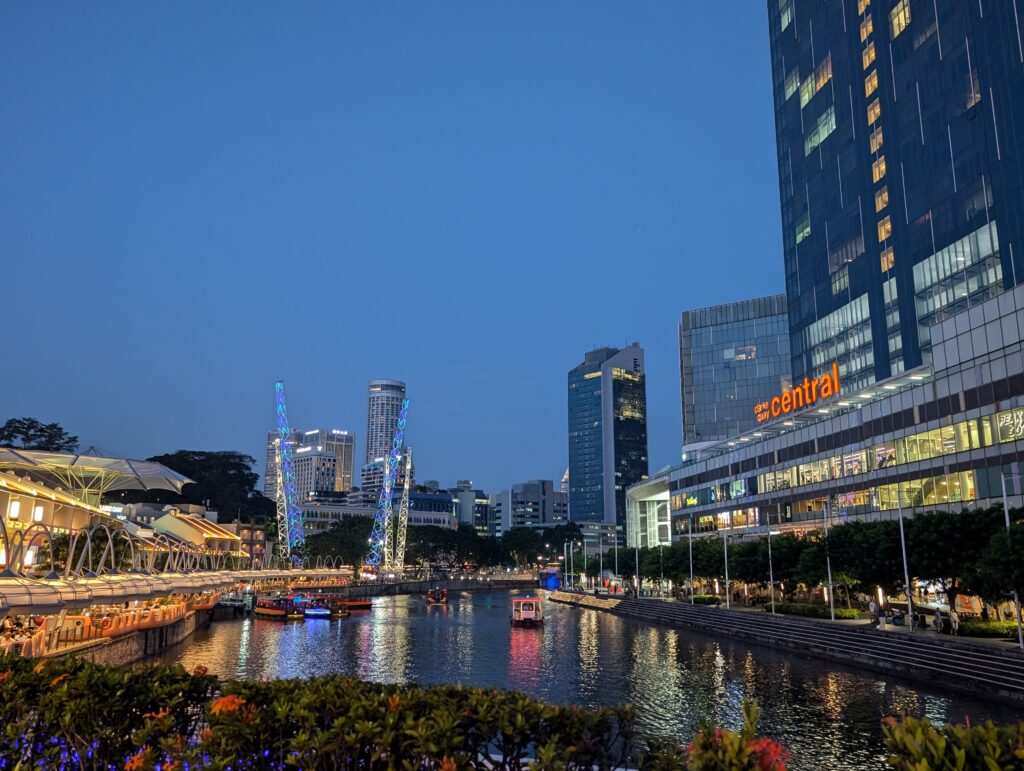
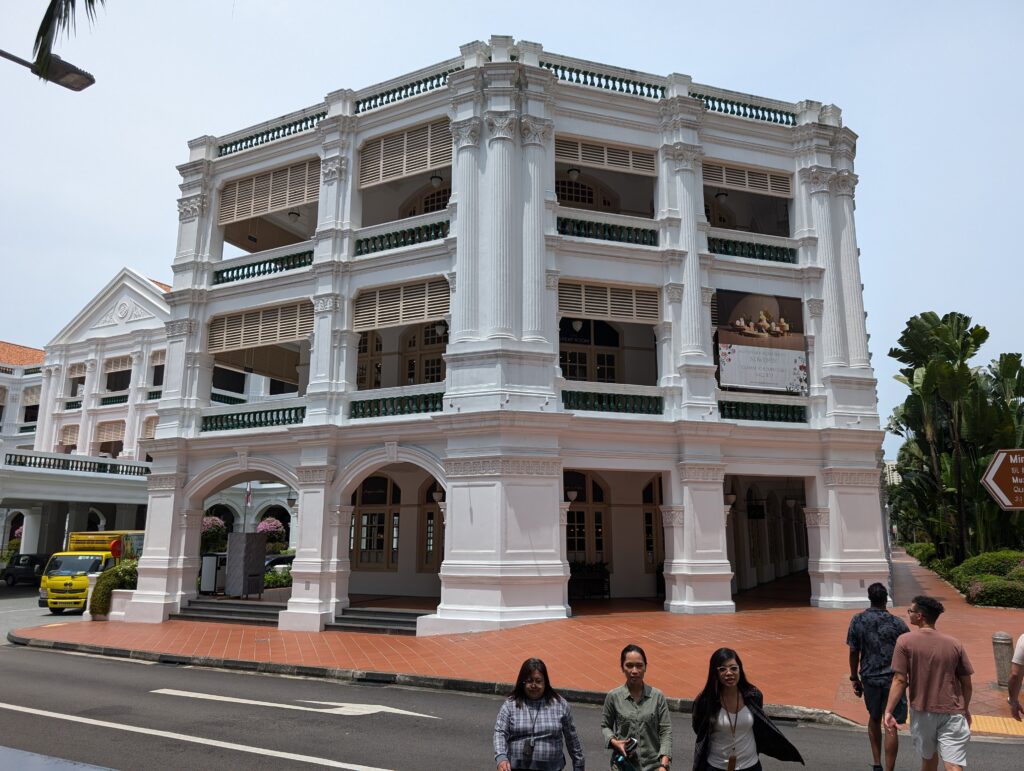
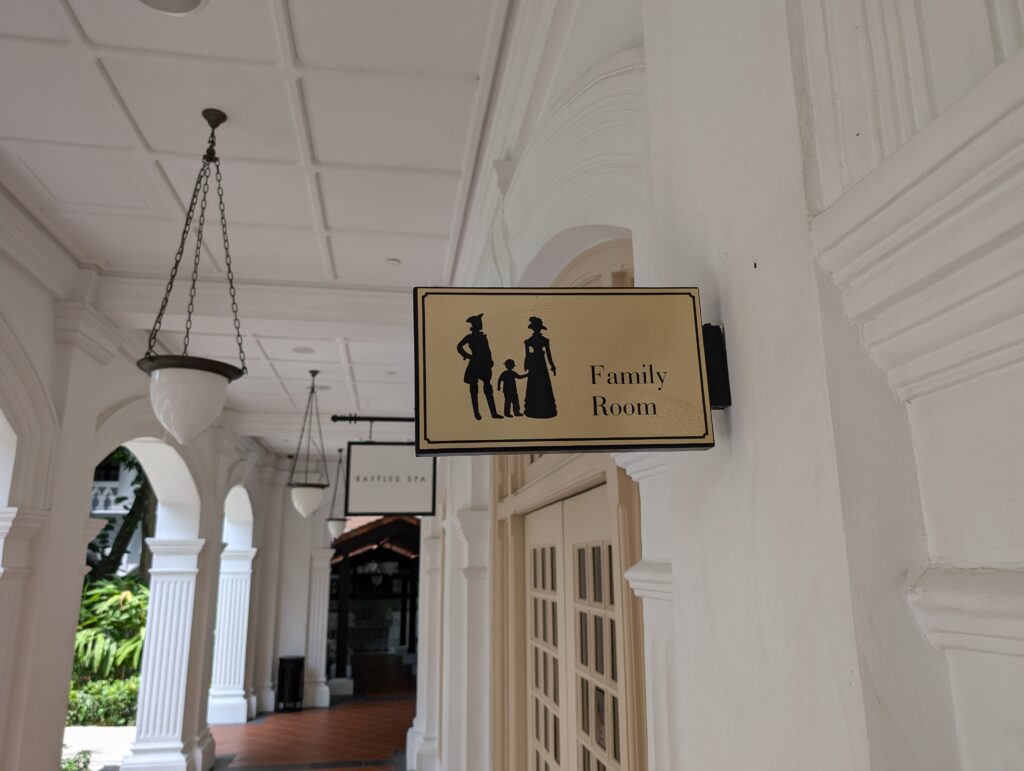
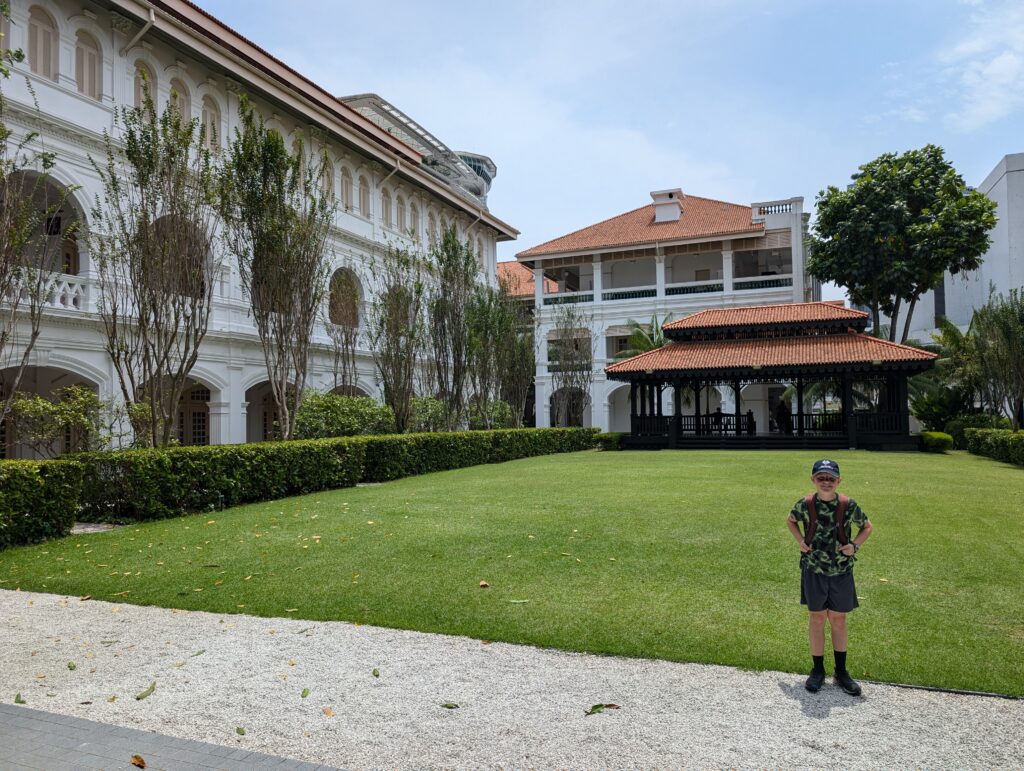
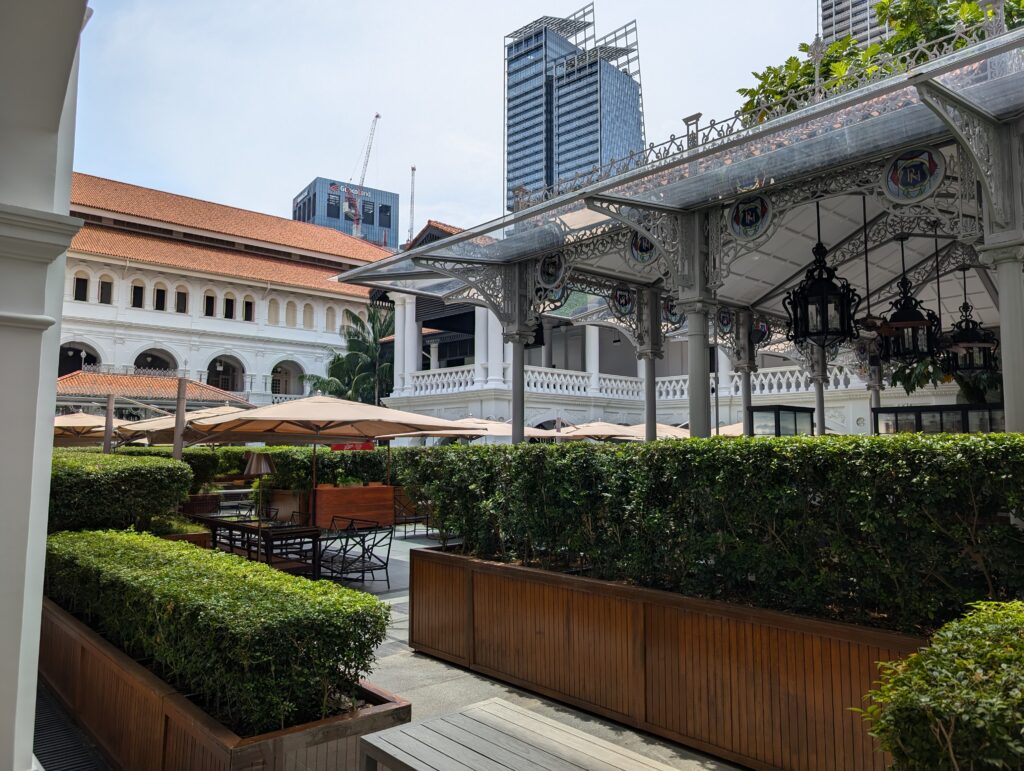
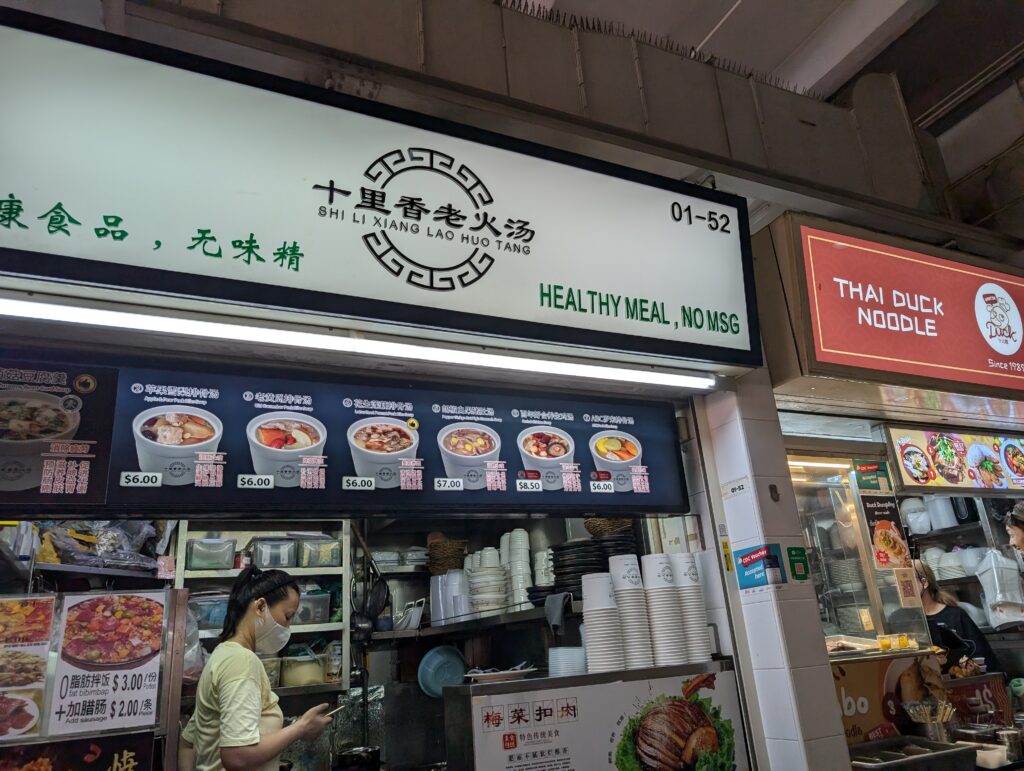
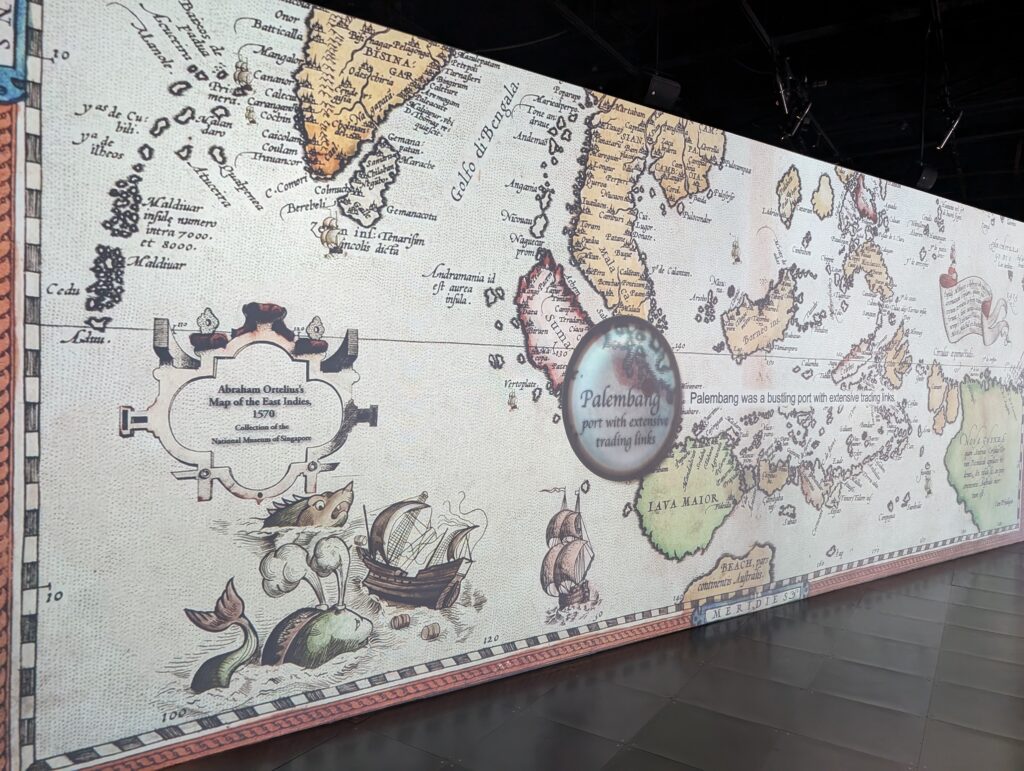


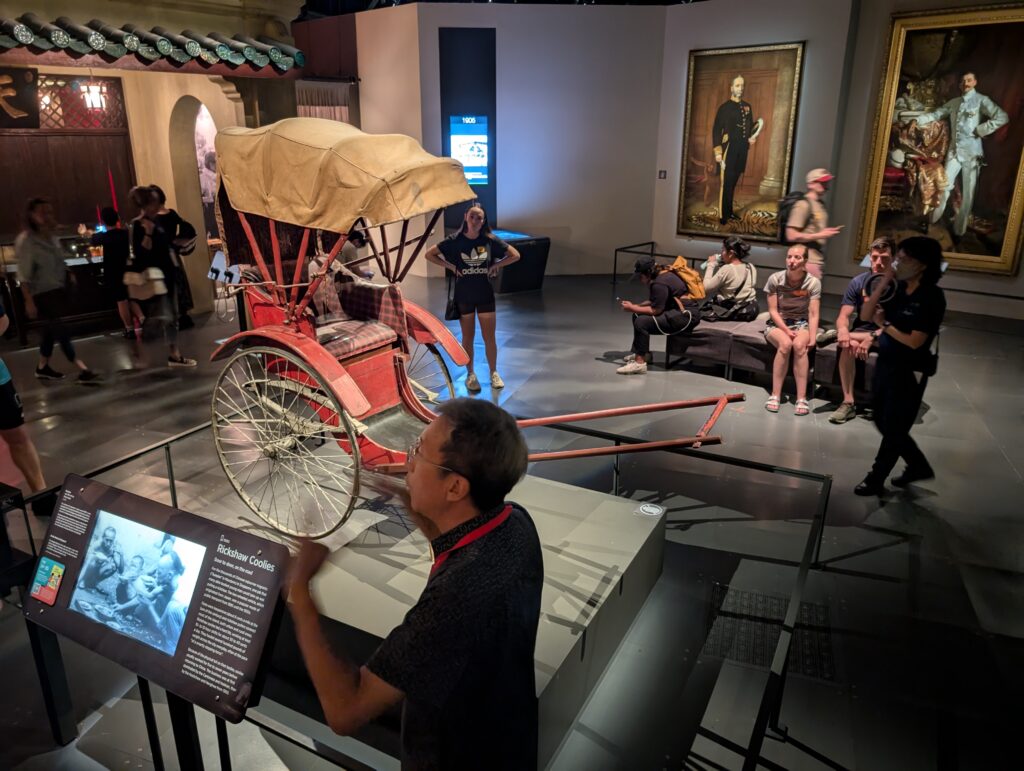
One of the reasons I wanted Caleb to sleep in the afternoon was so that we could visit the hawker centers for supper. Singapore is famous for these covered open air cafeterias. A large common area contains tables. There are never enough for everyone, so you end up sharing tables with other groups and visiting. These seating areas are surrounded by narrow aisles and paths usually lined on both sides with food booths. You can walk around and order one thing from this hawker, and another from that, building your own a la carte meal. There are hawkers specializing in Korean, Chinese, Malay, Indian, and Arab or Halal food. Among those, there are desert peddlers, fruit peddlers, and peddlers of all sorts of different specialty items. These hawker centers are spread here and there all over town. They each have a bit of a different emphasis or “flavor.”
I found the food at every non-famous hawker center I tried absolutely delicious. I learned several new favorite dishes. I intend to point Stephanie in the direction of Kwae Teow. I especially enjoyed the Kwae Teow Sambal. It consists of oily squishy noodles that are cooked up otherwise much in the same way you’d prepare fried rice. It is stir fried, and there is an egg in it. Usually there are a couple of shrimp in there. Sambal is a chili paste. I also liked Pao Fan. Really, there are a lot of great foods to try and the hawker centers are an especially fun way to try new foods. The only hawker center I thought did not quite meet expectations was the most famous one of all, Lau Pa Sat. This is the most upscale, modern looking venue. It sits in the fanciest, most upscale part of downtown. Several of the booths even have Michelin stars. I saved Lau Pa Sat for the grand finale, and ate there our last night of the trip. I expected the booths there to be expensive, but they weren’t. The problem was just that the food was more bland, and definitely did not have much spice. I had grown used to the Malay and Indian influences, which often use chili pastes and other means of adding a little heat to the dish. It was fine, just not what I expected it to be.
It was 10:00 p.m. by the time I got Caleb in bed, but he had a long nap in the afternoon, so I figured he would be ready for action in the morning. I was wrong. He slept until 11:00! I suppose I could have roused him earlier, but kids (or adult travel partners for that matter) can be grouchy or scattered enough even with sleep that I generally let my fellow travelers sleep unless there is some concrete reason not to. I’ll get people up to catch planes or trains, but not to get to a museum earlier, or just to avoid walking in the heat.
It was hot by the time we left for the Raffles Hotel. There are many hoity-toity hotels in Singapore, but the Raffles is a historic destination, in some ways almost like a museum. It was built in the 19th century, and retains much of its old charm in spite of several additions and renovations. Some of the history of the hotel is posted in the gift shop, and it was fun just to walk around and look at the woodwork, the grounds, and the shops associated with the facility. In its heyday, this hotel hosted the most distinguished travelers from the British Empire as well as diplomatic visitors and investors in the tin and tea businesses being developed in this part of the world. It was owned by three Armenian brothers during many of its best years. You can still stay there now, and it is still a luxury hotel. It might be fun to do that sometime, just for the experience, and to see if the rooms reflect the old world charm. It was the first hotel anywhere in this part of the world to have electric lights in every room, which was a major deal when they went in.
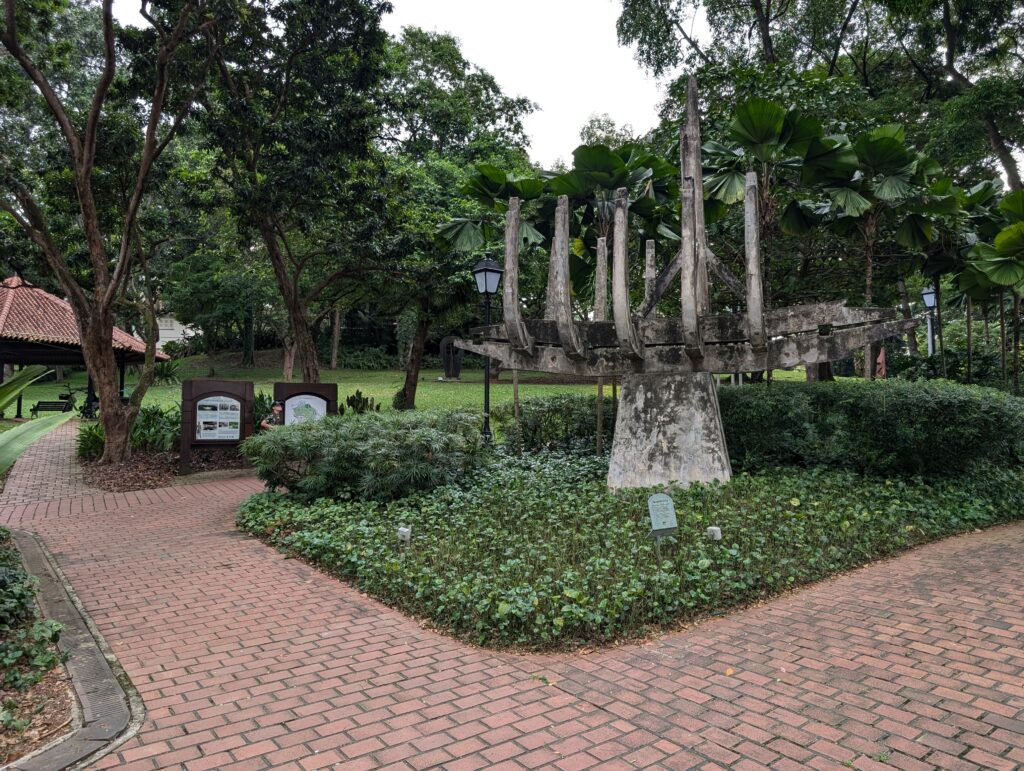
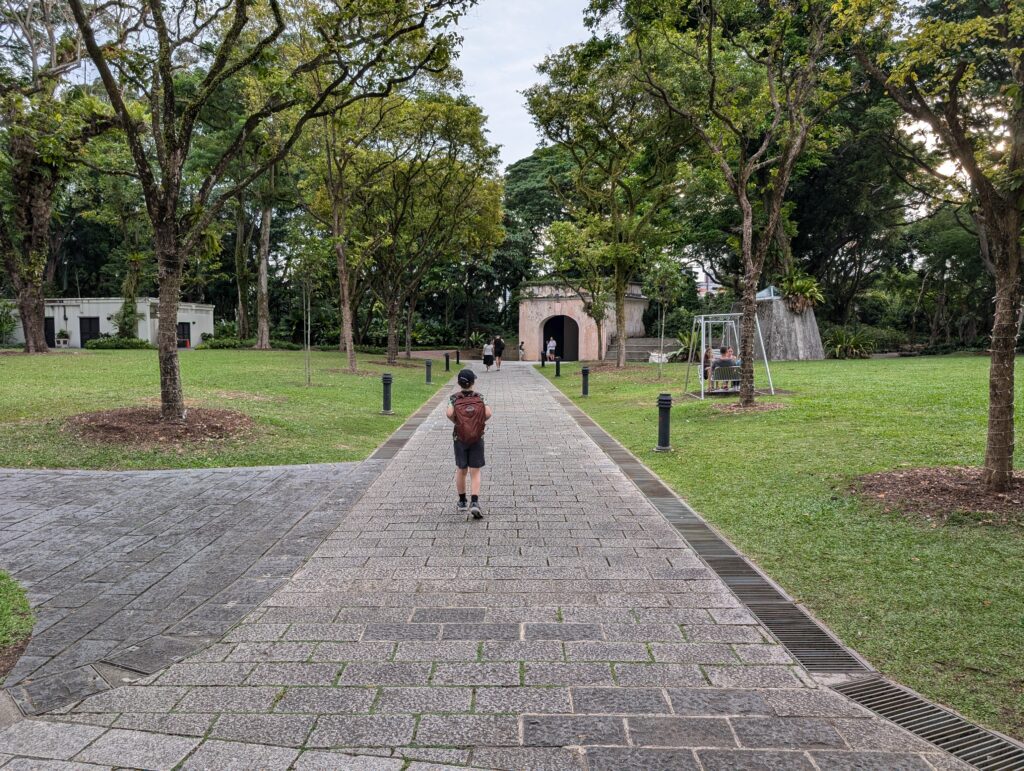



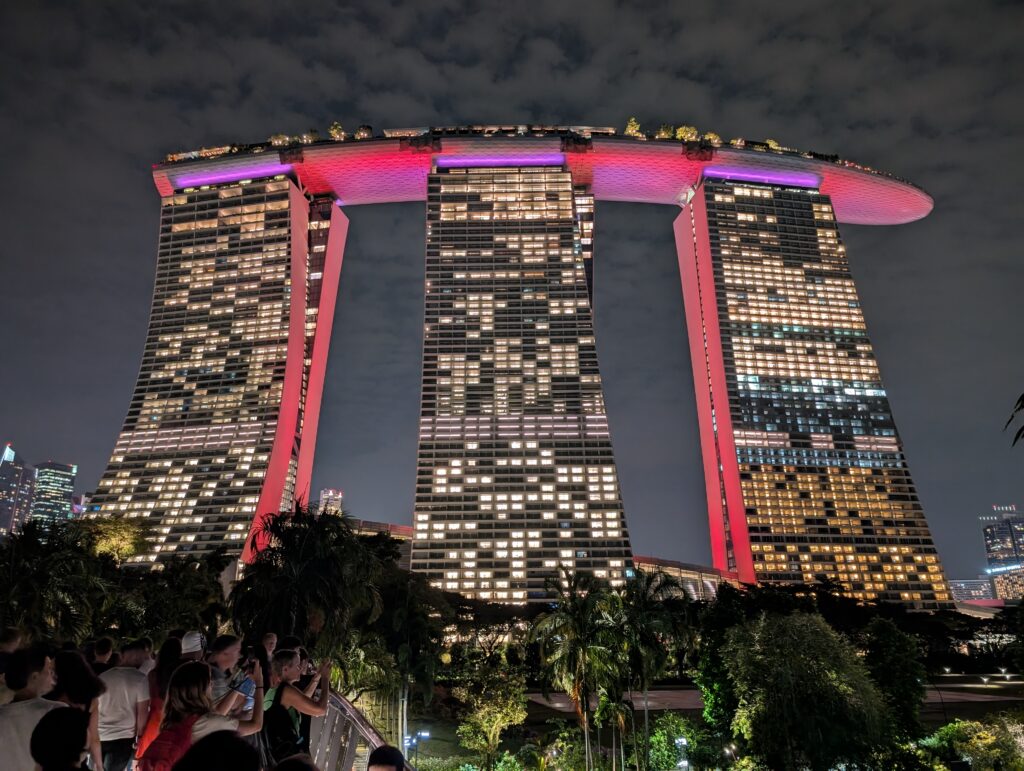
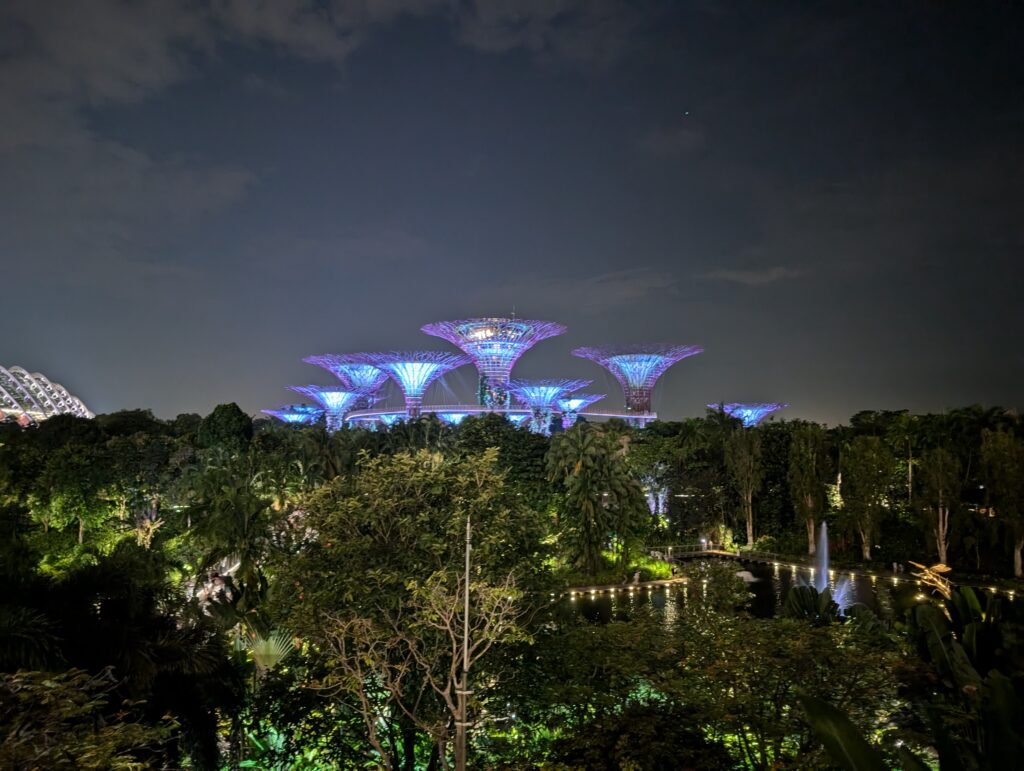
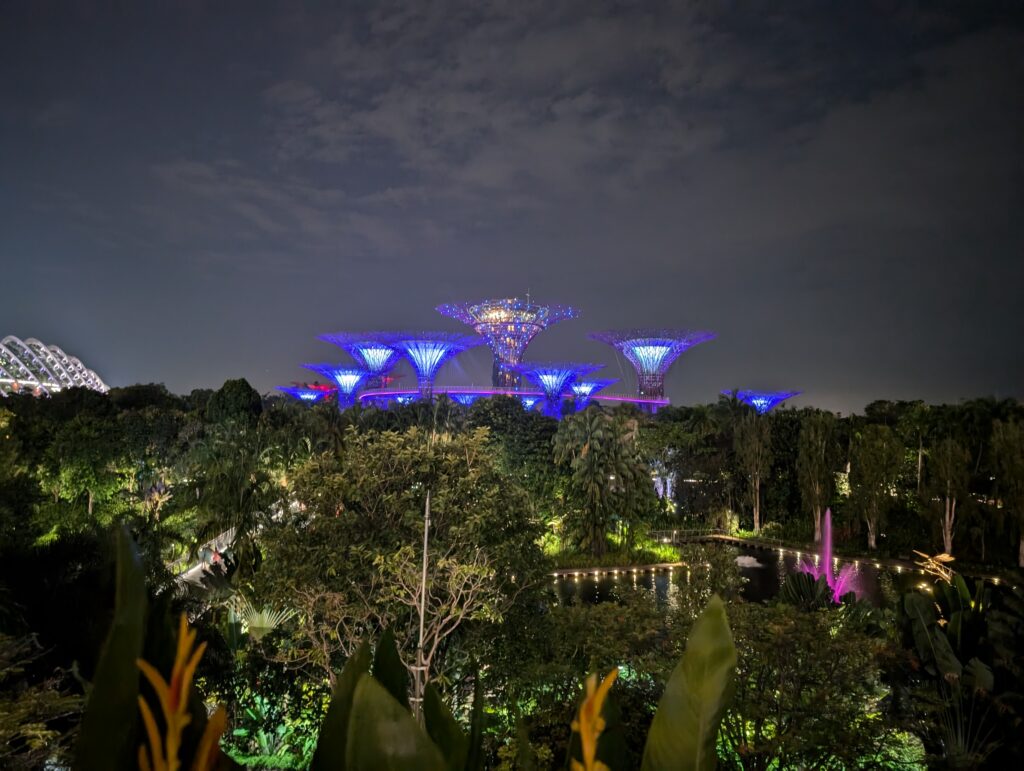
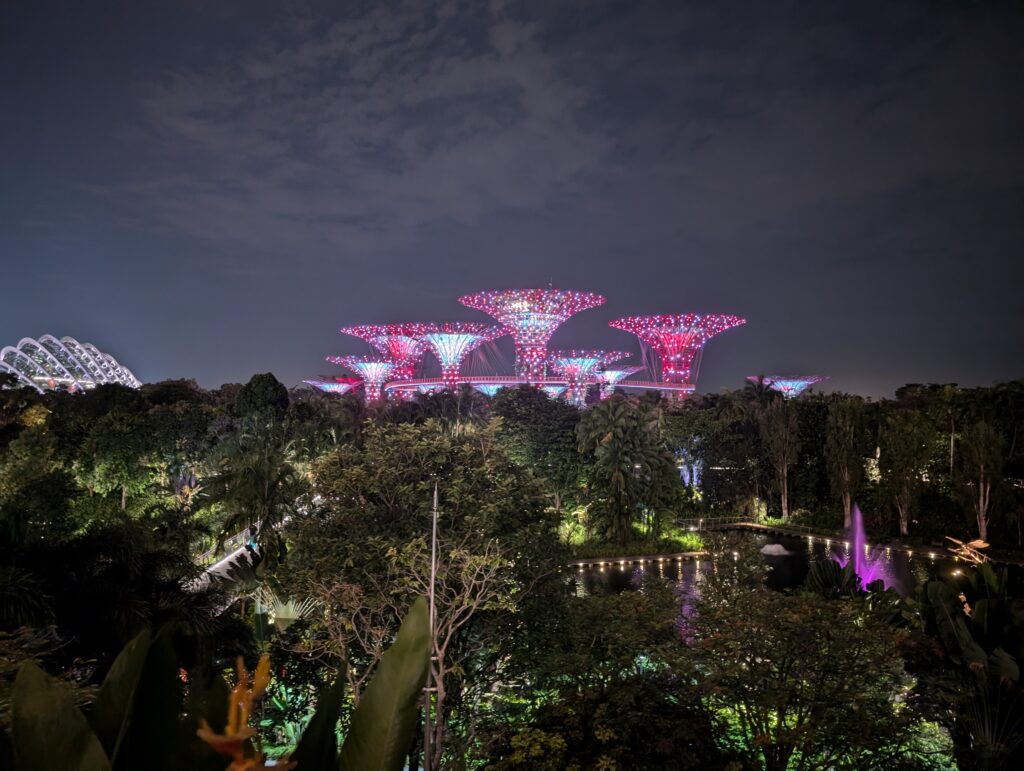
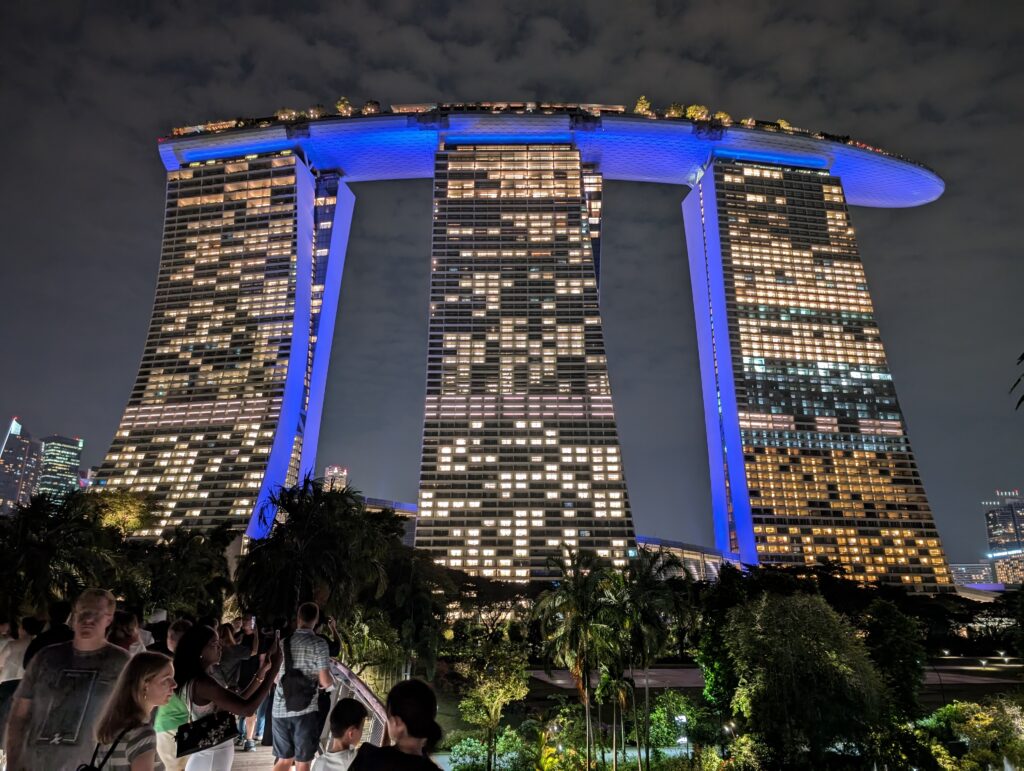
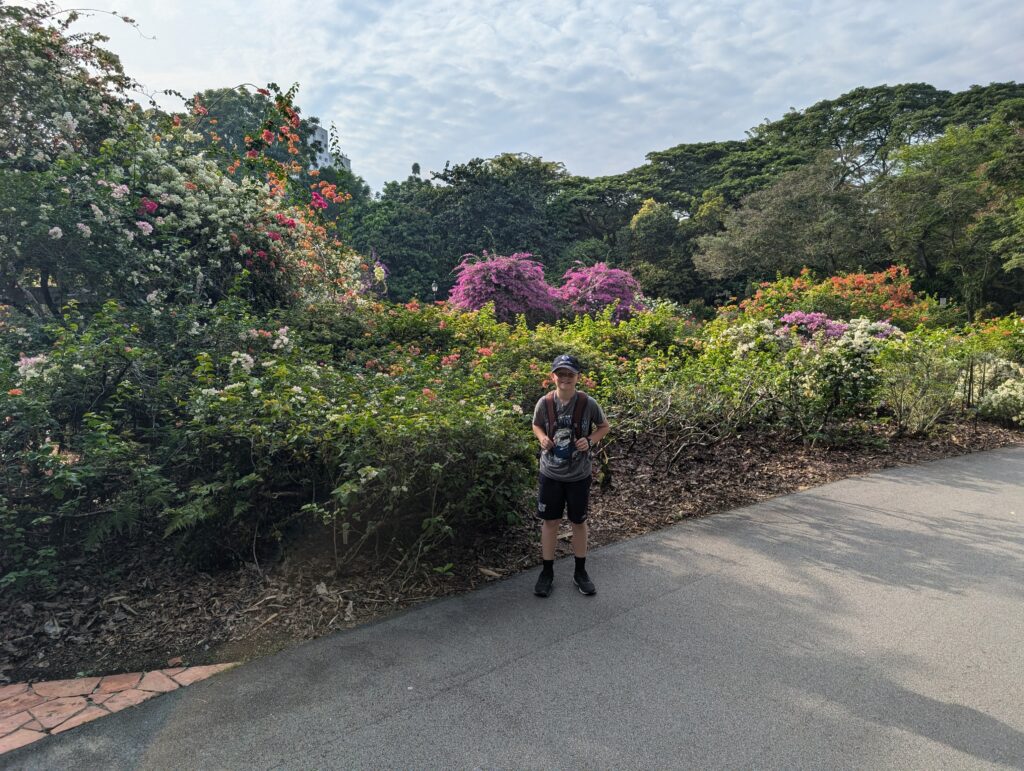

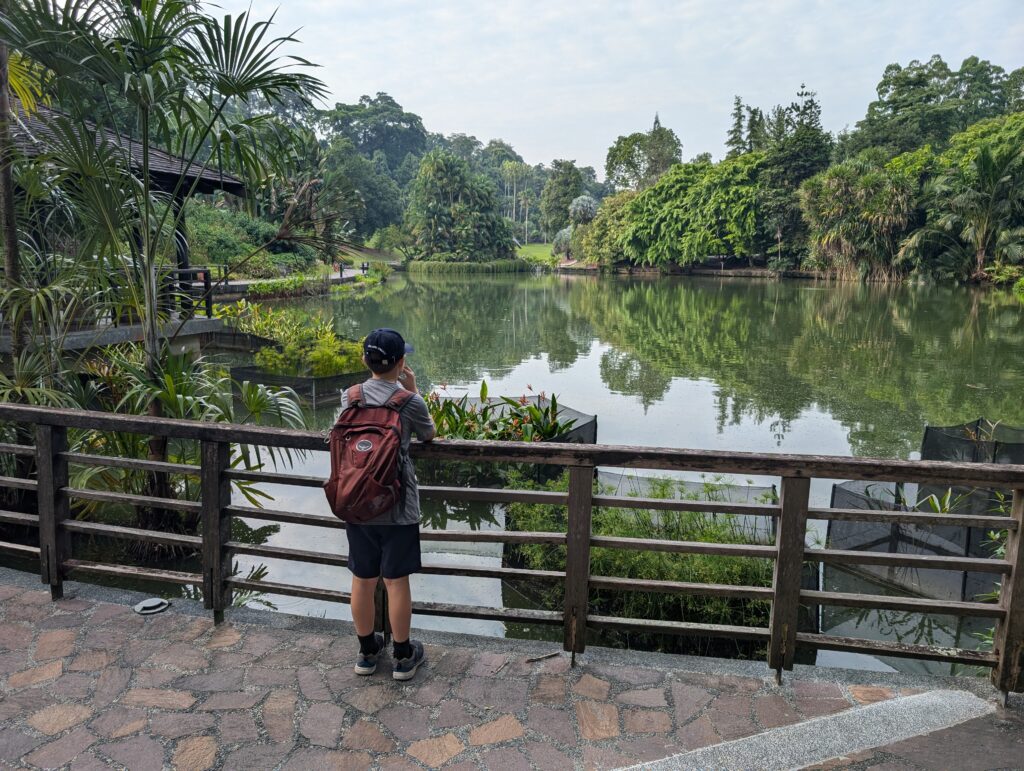
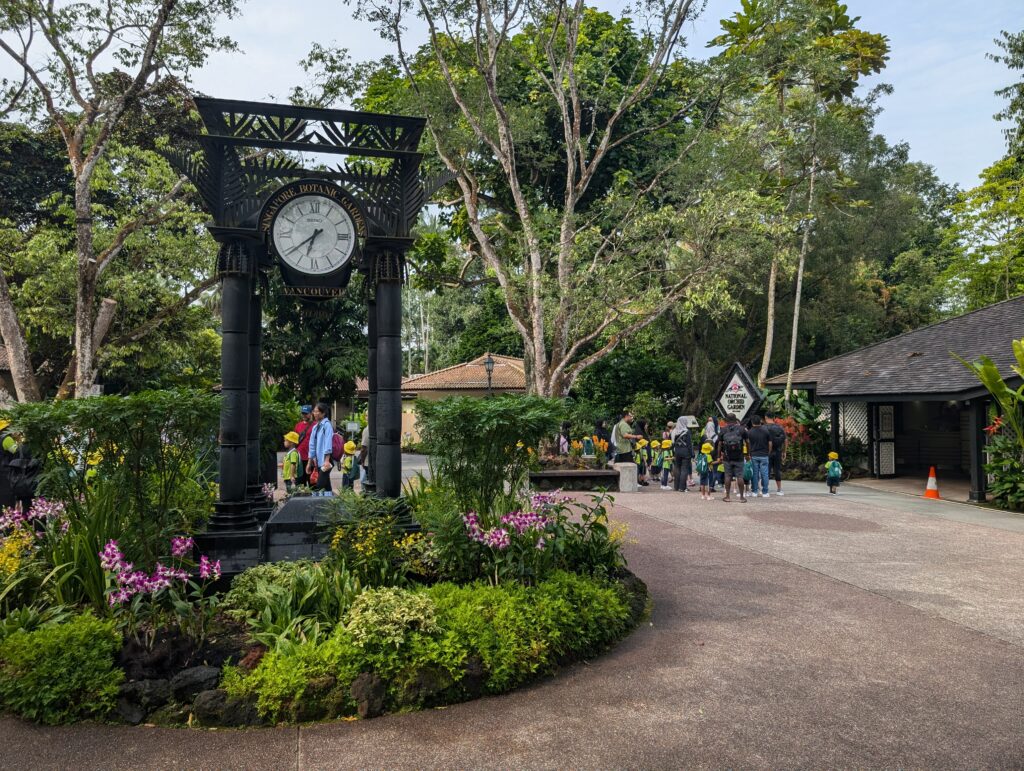
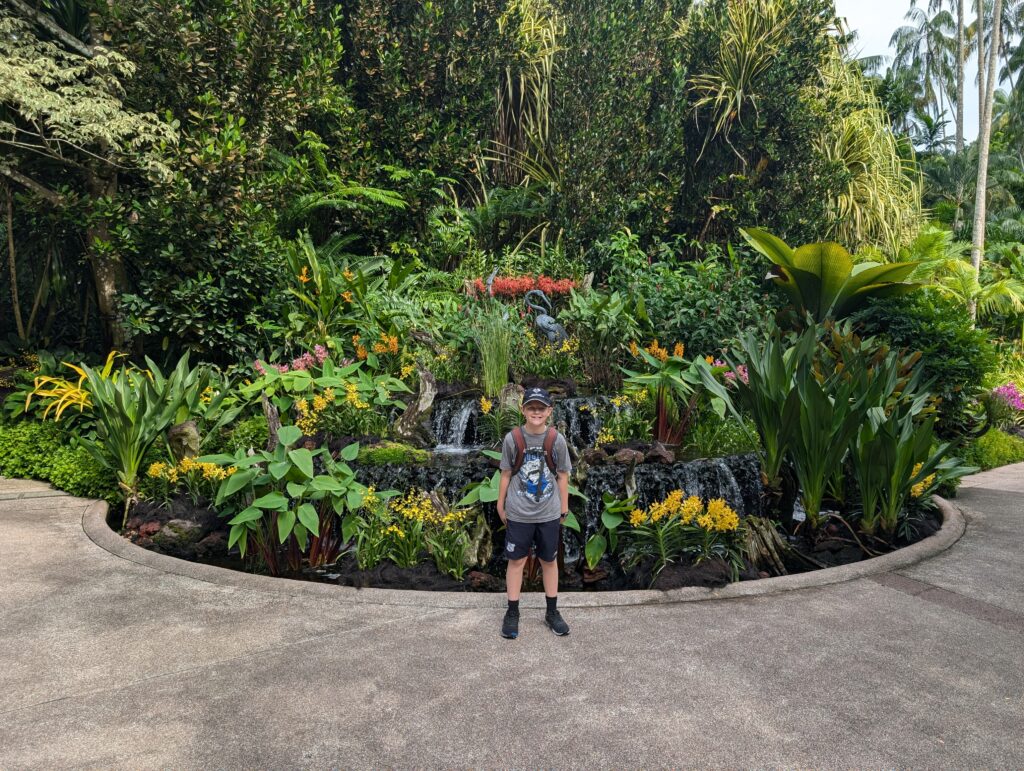
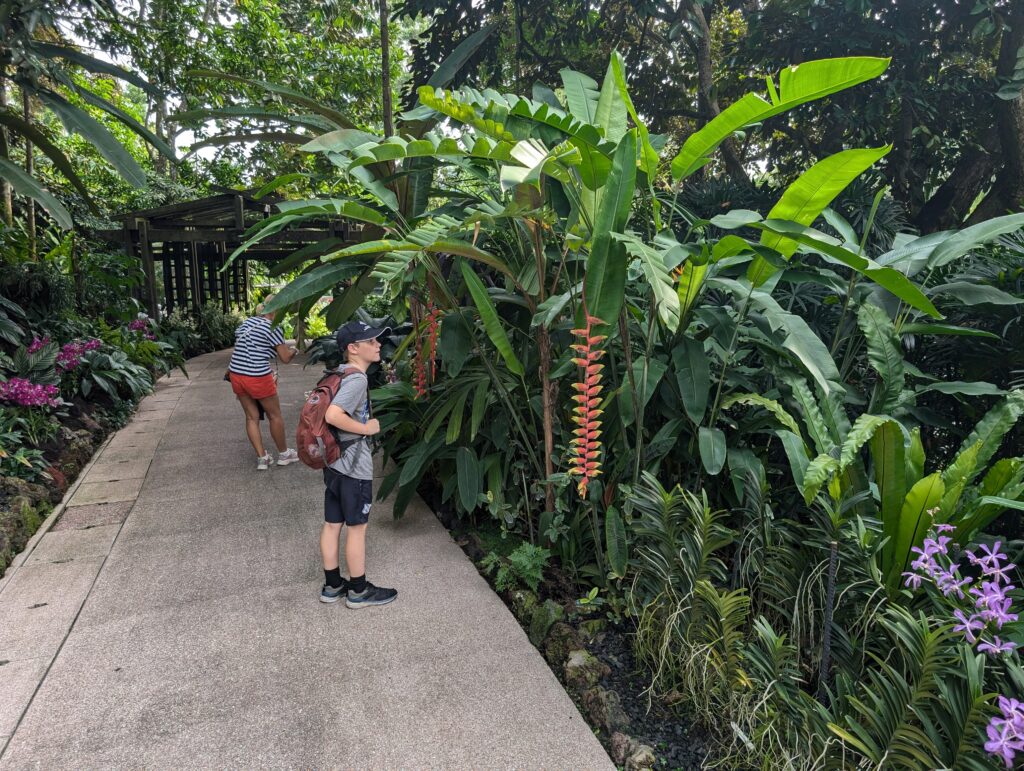
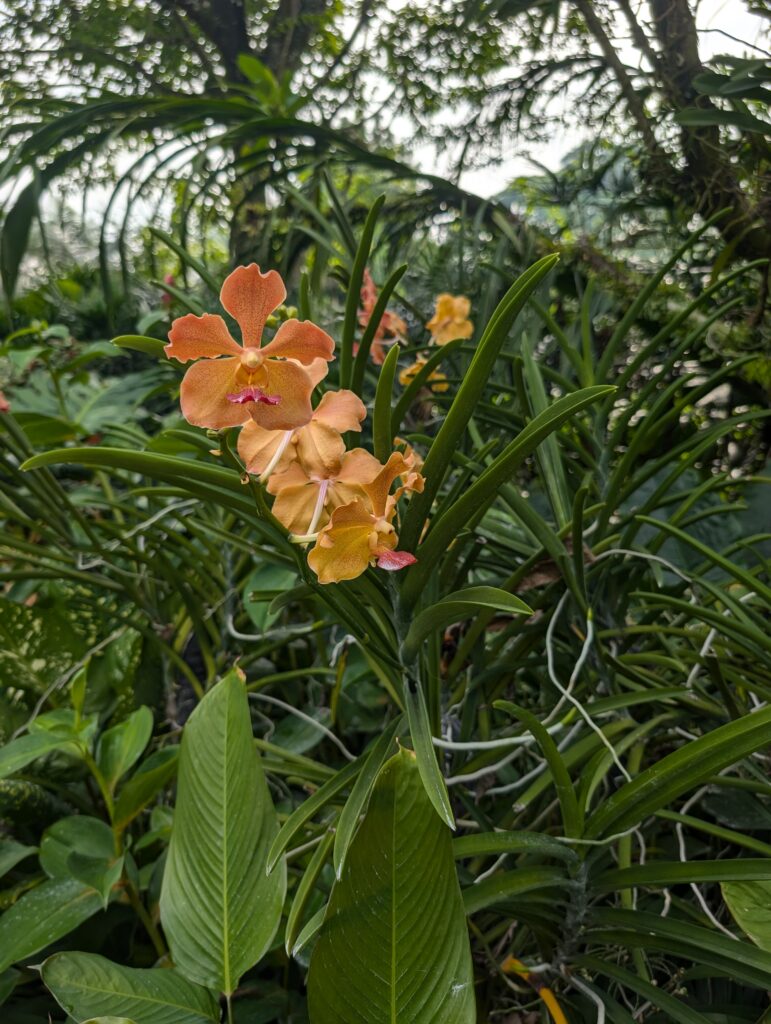
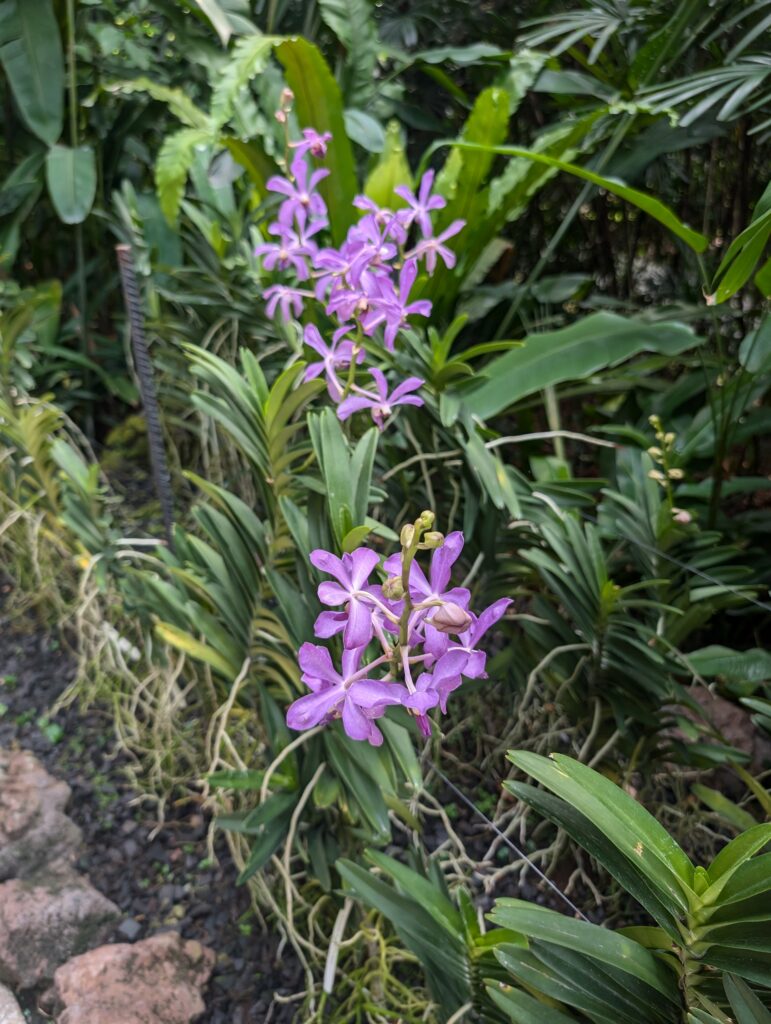
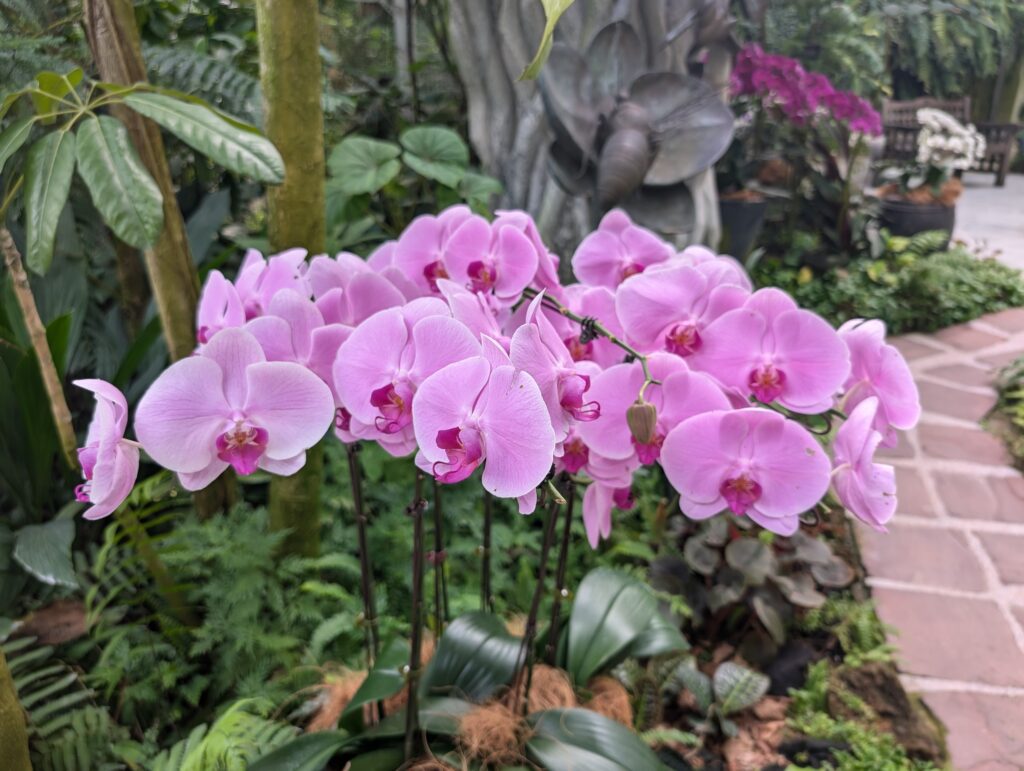

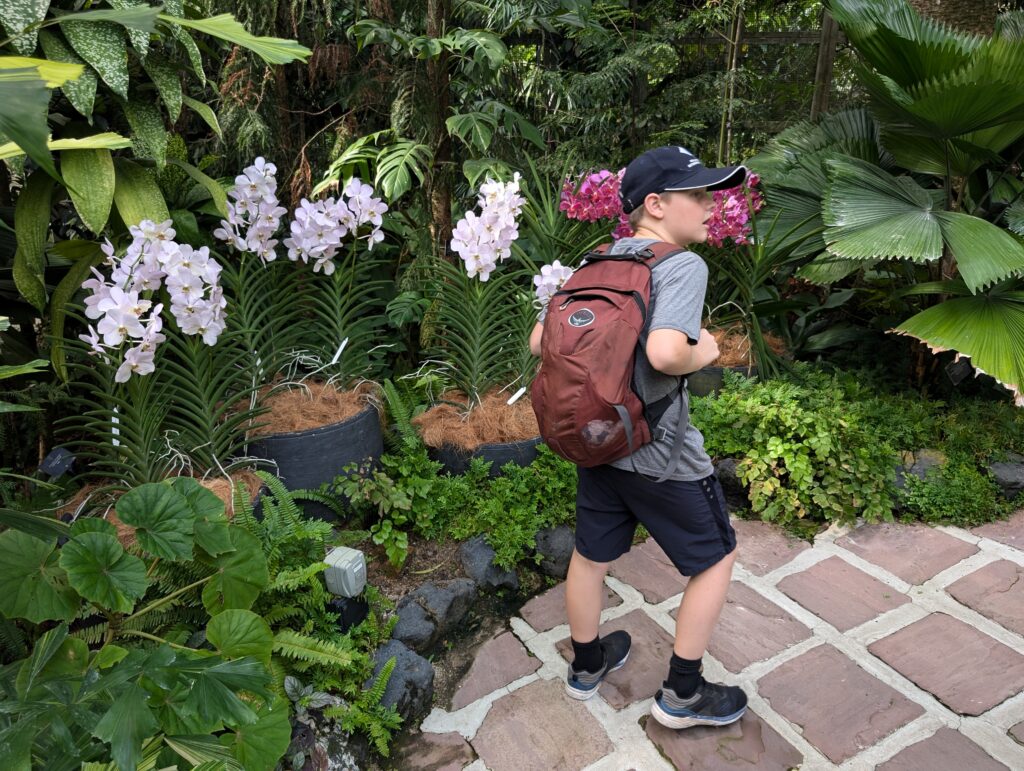

I was very popular with tour groups on this trip. I was interviewed yet again by a contingent of students from a Singapore girls school. They asked some questions about what I liked about the city, and what struck me as unique and impressive, not only in terms of tourist attractions and urban development, but also what I noticed as culturally particular to Singapore. So this was a bit deeper probe than the English learners we talked to in other countries. They caught us on our way to the National Museum.
The National Museum of Singapore may have been one of the least expensive museums we visited while in the city-state, but it was the most impressive. This was in part due to our volunteer tour guide. He showed us the highlights of the museum in about an hour and a half, while seamlessly weaving in the story of Singapore from the arrival of the first seafarers centuries before, through the colonial period and right into independence. It was a more professional tour than any of the professionals had gaven me on the trip.
The tour went well because we had a great guide, but also because the history of Singapore is easy to encapsulate. I was asked once to teach a freshman college course on the history of the world from creation to 1500. Well, how do you cover all that? The geographic and chronological scope are unmanageable. Not so with a discussion of Singapore’s history. The area is small, and it is for the most part a nation of immigrants. Little is known of the inhabitants of pre-European exploration Singaporeans. It was an area controlled by Malay rulers, and was kind of a backwater, though there was nearly always sea traffic here because of the location. But for the most part, the story of Singapore can start with the sea lane version of the silk and spice trade, discuss Portuguese and Dutch interaction with the far east, and then move to the arrival of the British in the early 19th century. You would talk about colonization and Singapore in the British imperial system, then discuss their disputes with the Netherlands. You’d give a brief discussion of Japan’s expansion followed by their attack and occupation of Singapore. Ultimately, British management of the Straits Settlements during and after the war put Singapore and Malaysia on track for independence. So the tour would conclude with an explanation of how planning turned an under educated, over populated city into a developed model economy of information and finance. It really is a massive success story, that was done in a way very specific to Singapore.
We spent a little extra time in the World War II section, but also hung around after the tour to chat with a visitor from China and the tour guide himself, discussing differences in culture, planning, and approach between Singapore, China, and the U.S. It was a great opportunity to share thoughts and ideas, and I think we all three truly enjoyed the discussion. It would seem at first blush that Singapore and China would have the most in common. Singapore is 70% Chinese after all. But in many ways, China and the United States share more common obstacles. China would like to use Singapore’s planning to accomplish their economic and social goals, but cannot accomplish it. Of course, Americans would balk at much of this central planning, whether it was done on Singapore’s terms or China’s.
The National Museum was right next to Fort Canning. This had been the site of whatever ruling elite resided on the island locally centuries ago. It is also where the British put their headquarters. There is not a lot of historical significance or interpretation here. We walked the area until we had worked up an appetite, and then headed to the Arab Quarter for a spicy supper.
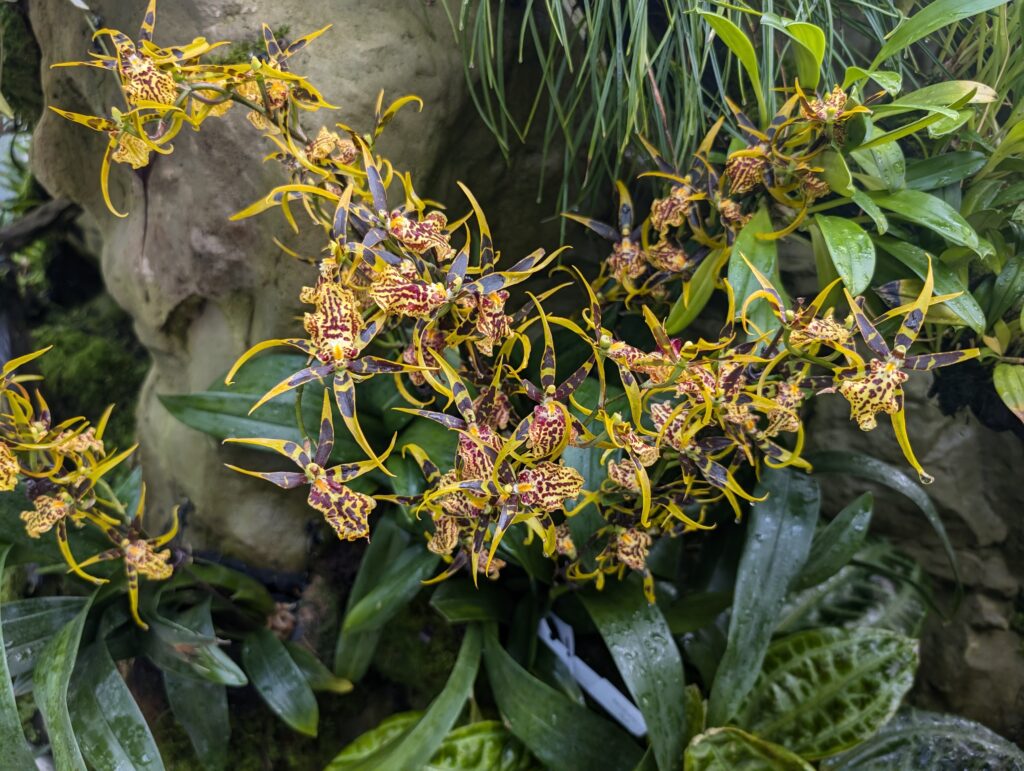

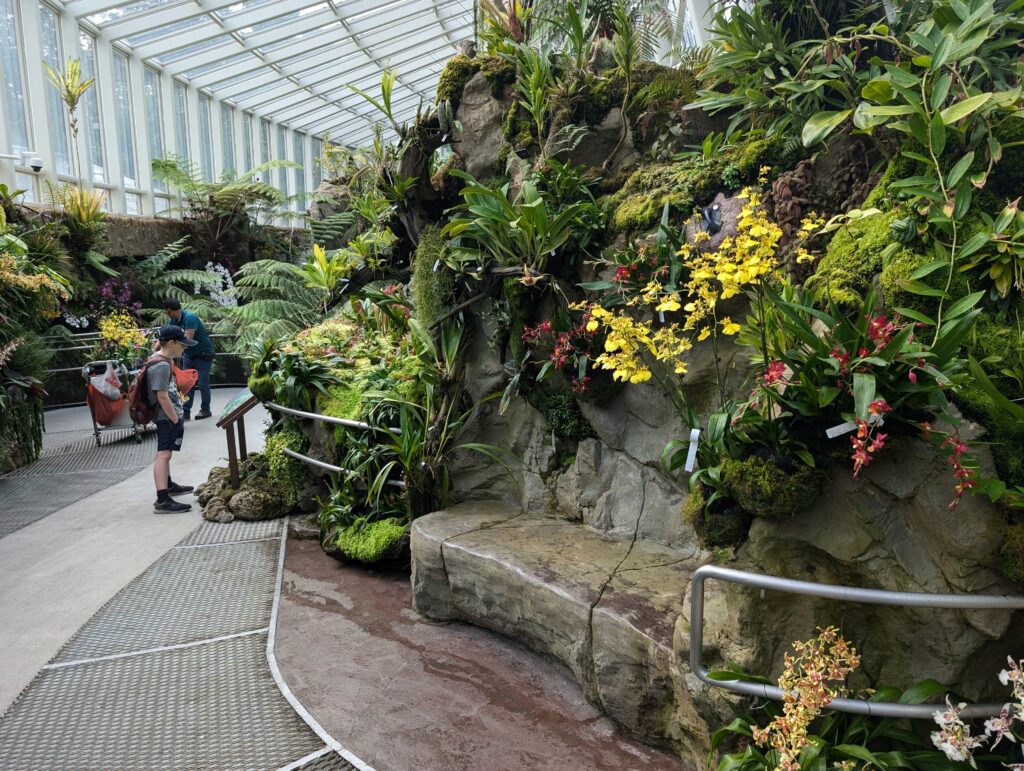
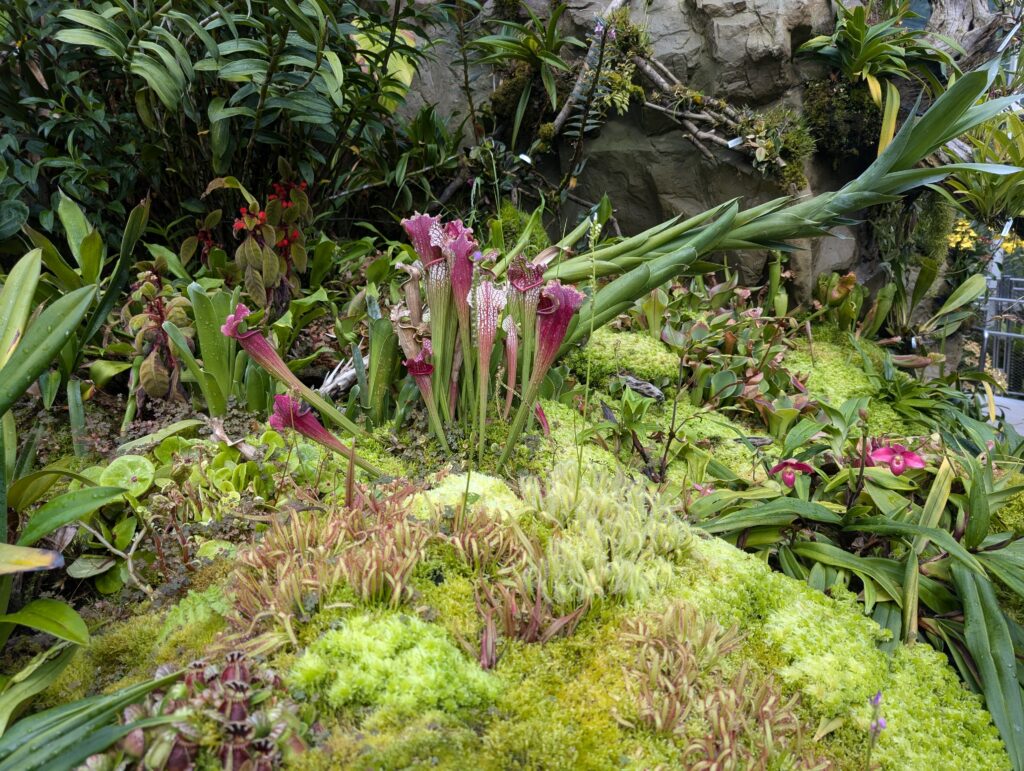

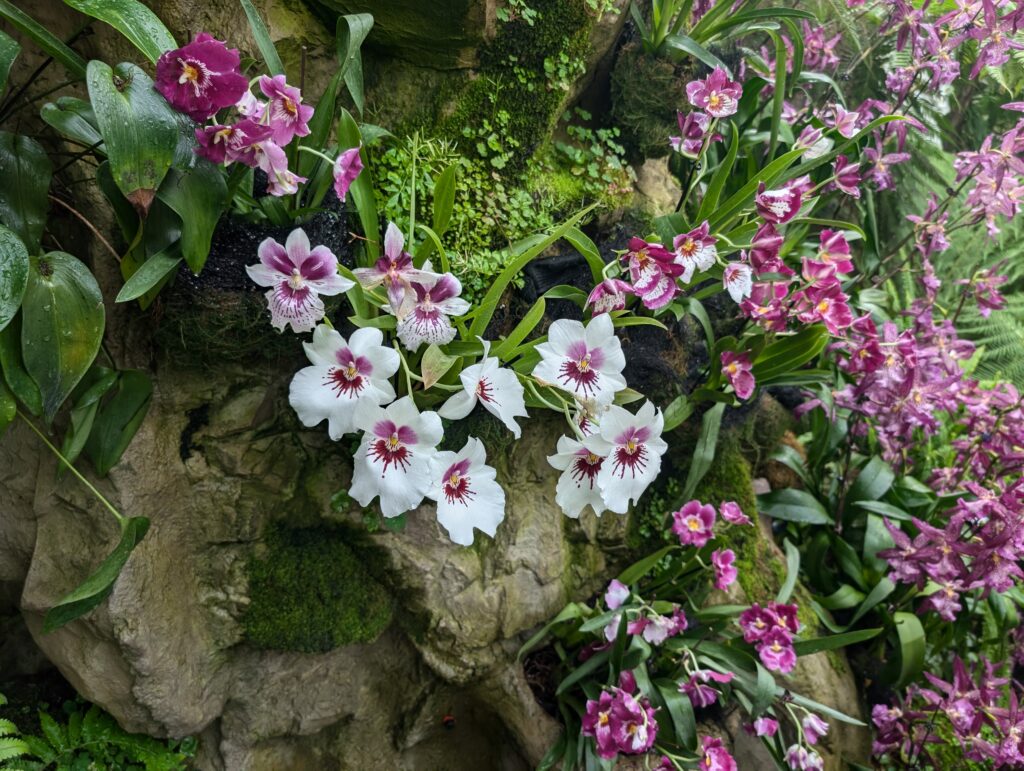
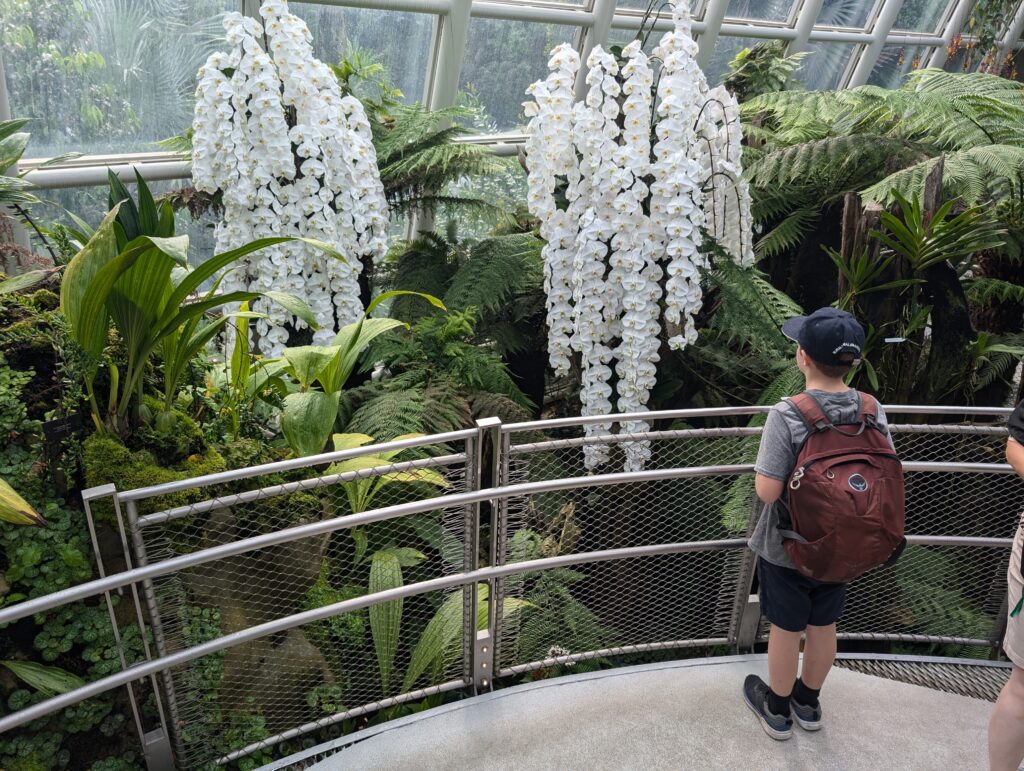
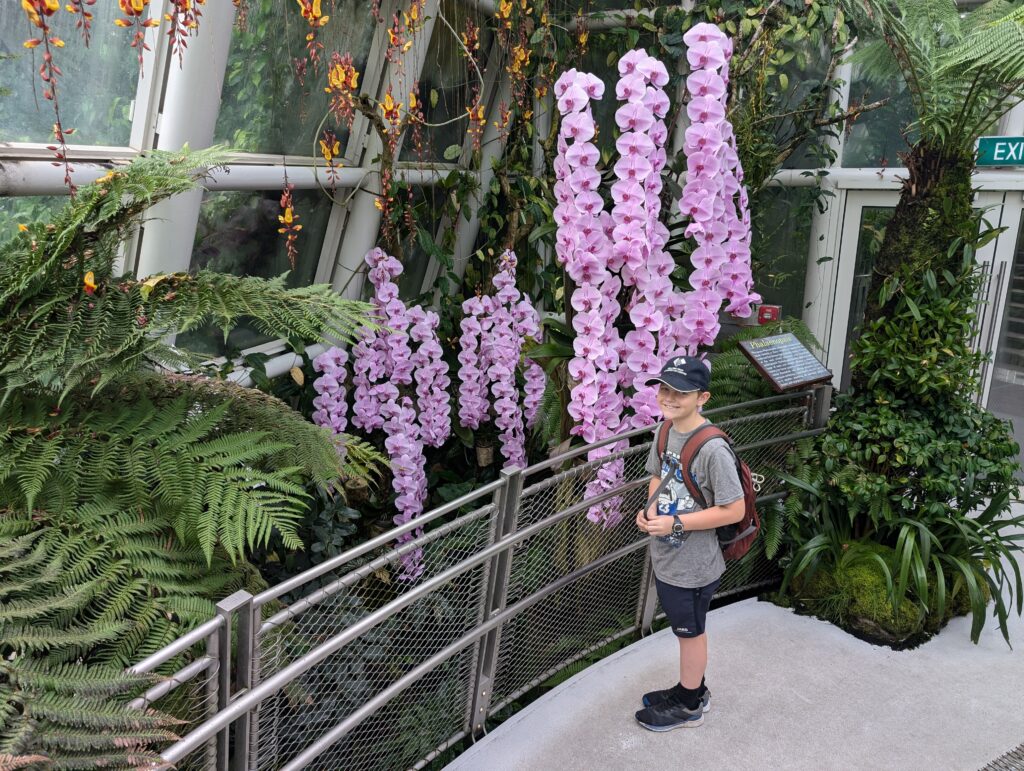
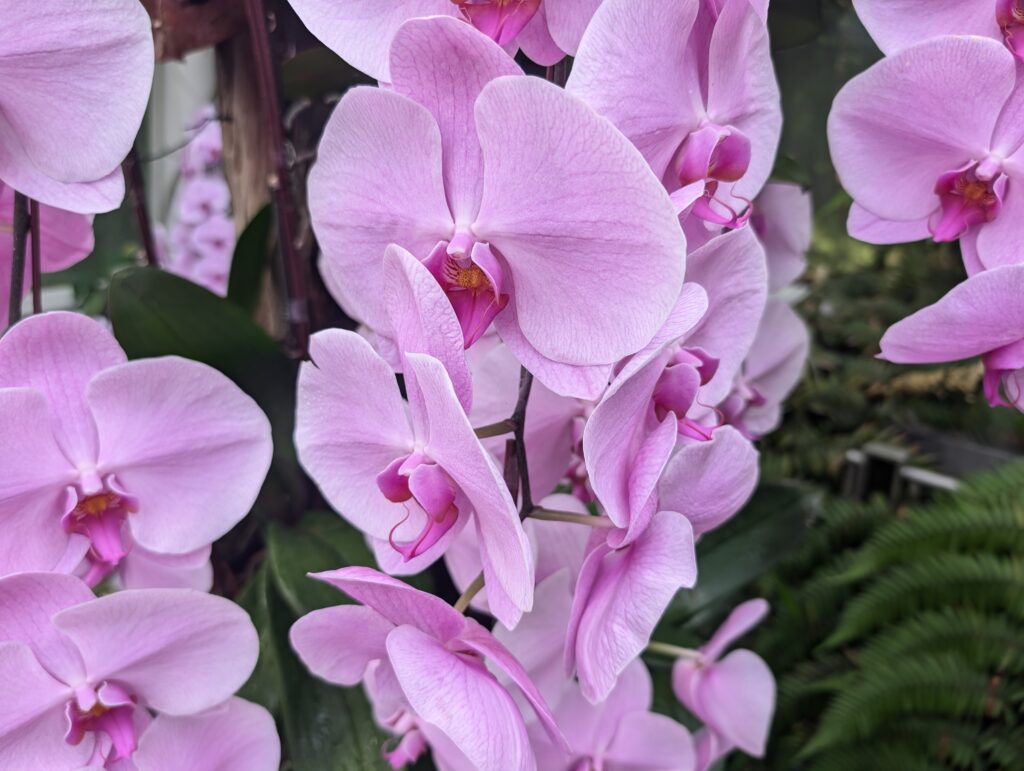
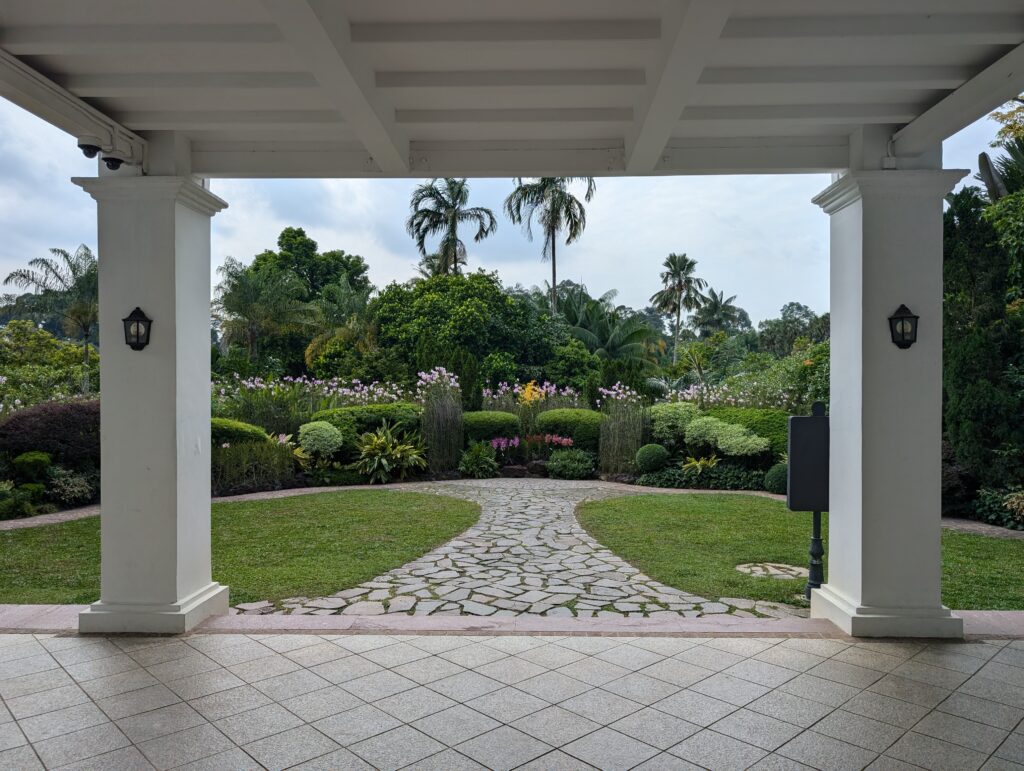
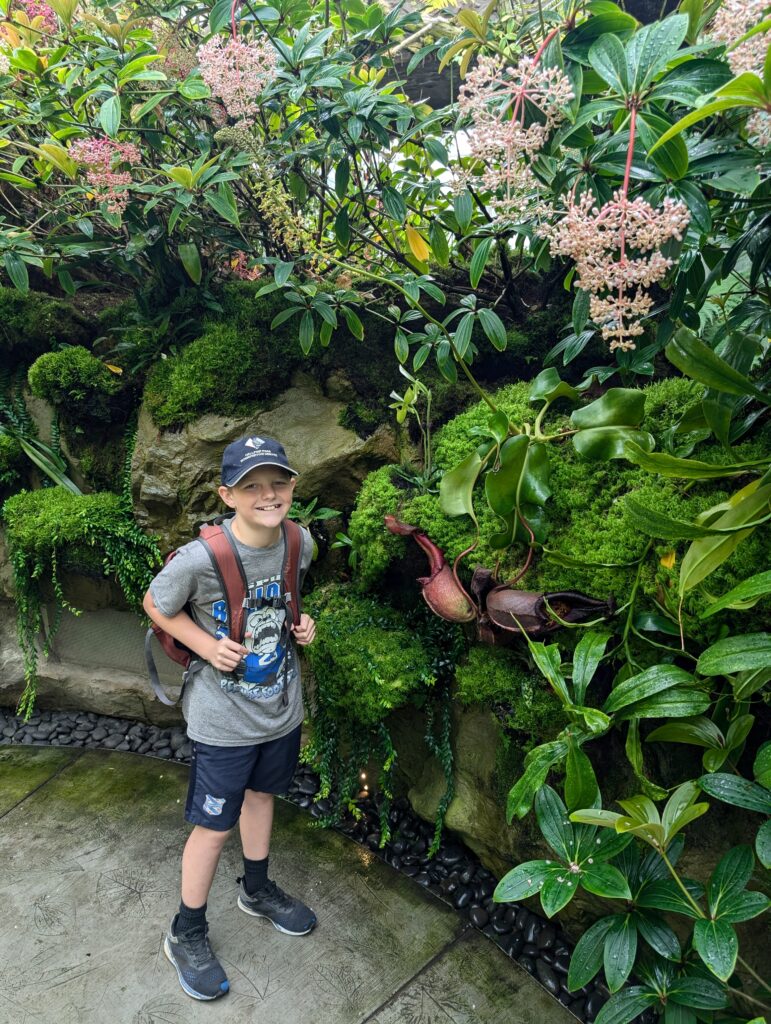

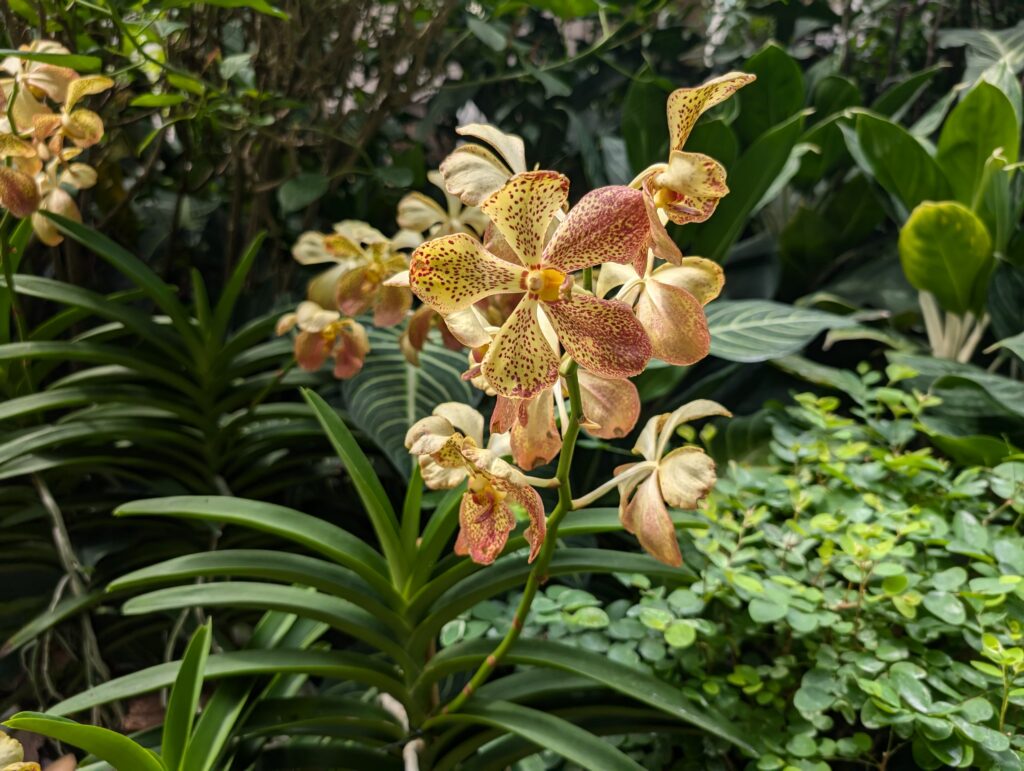
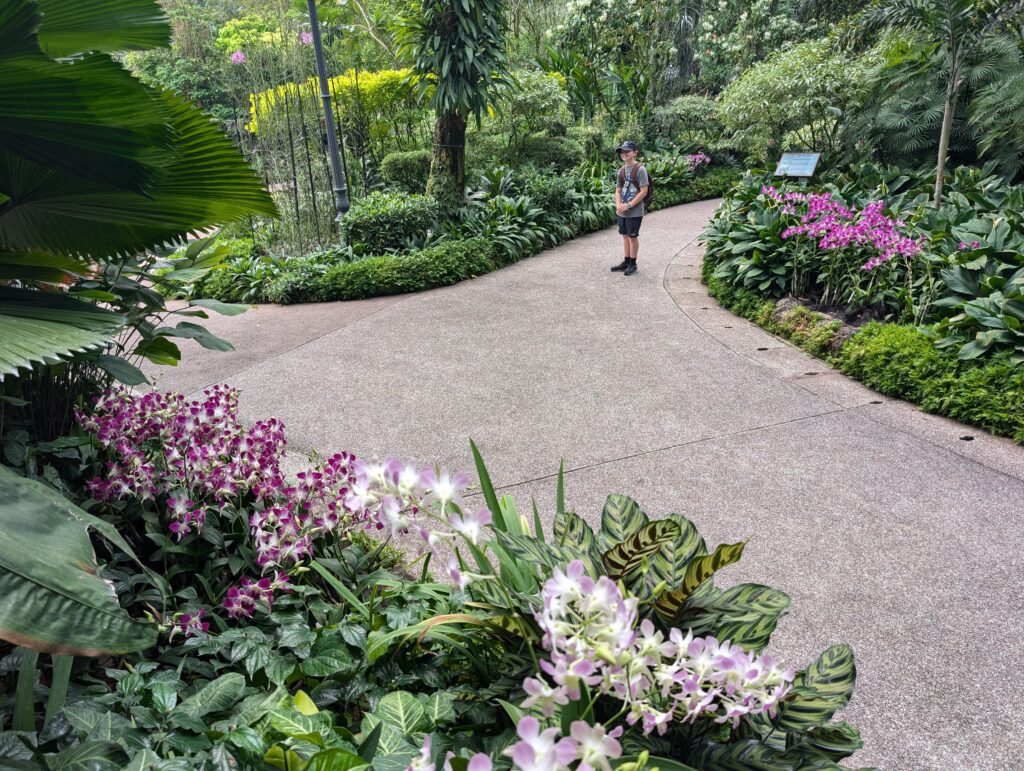


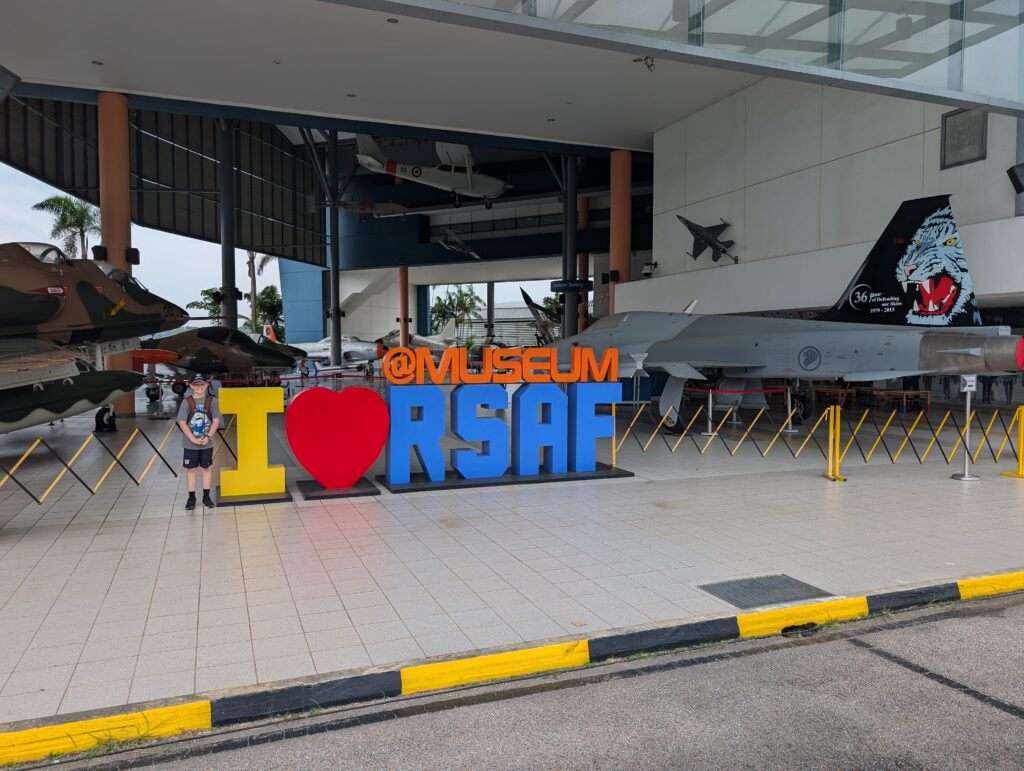
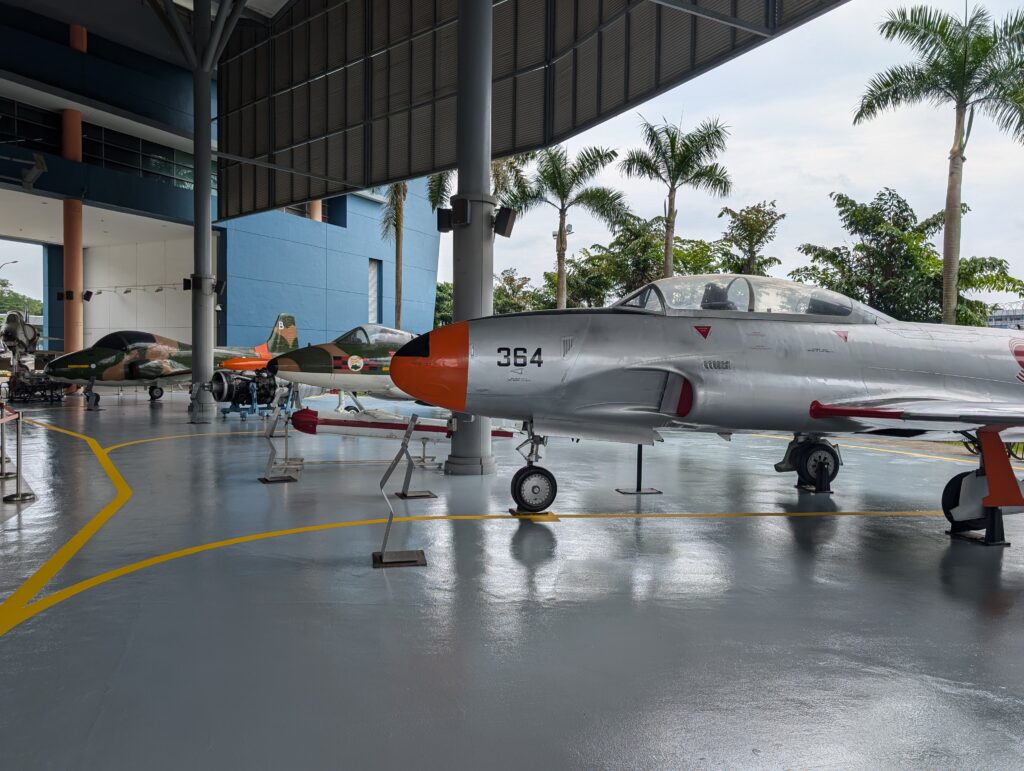
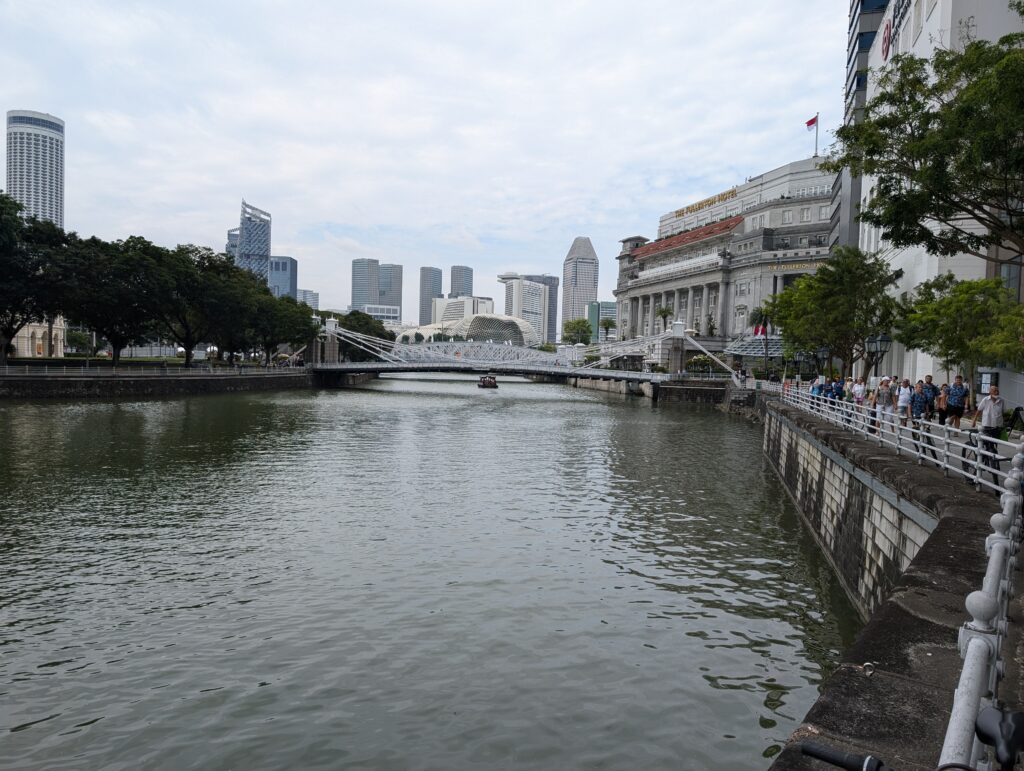

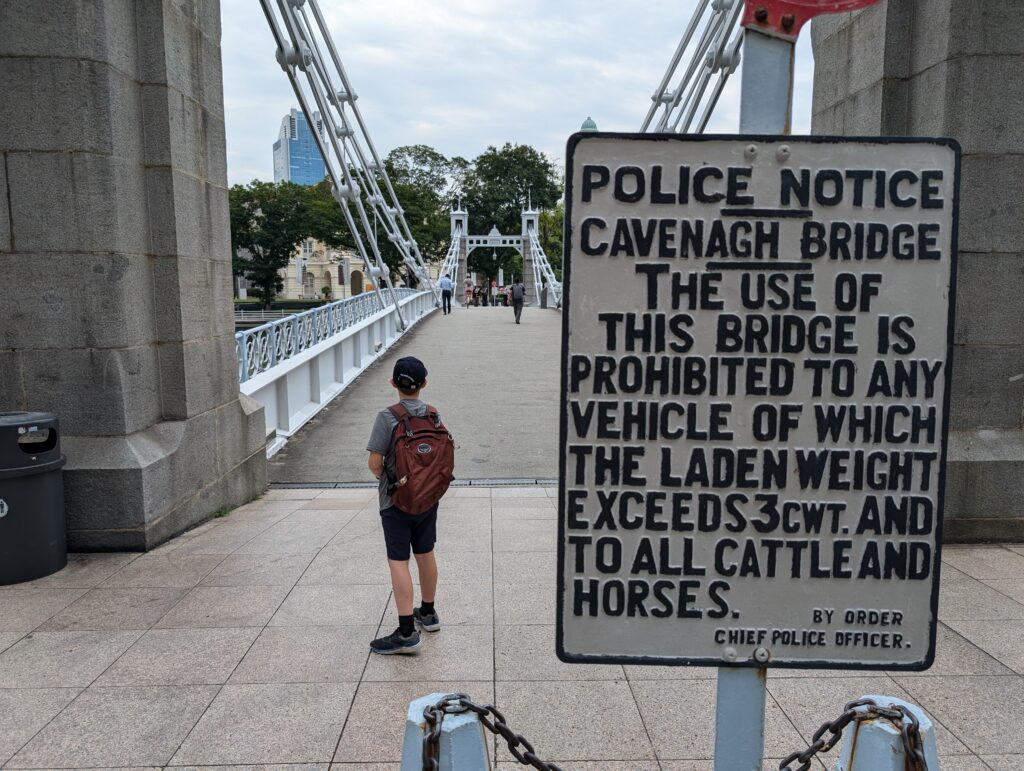
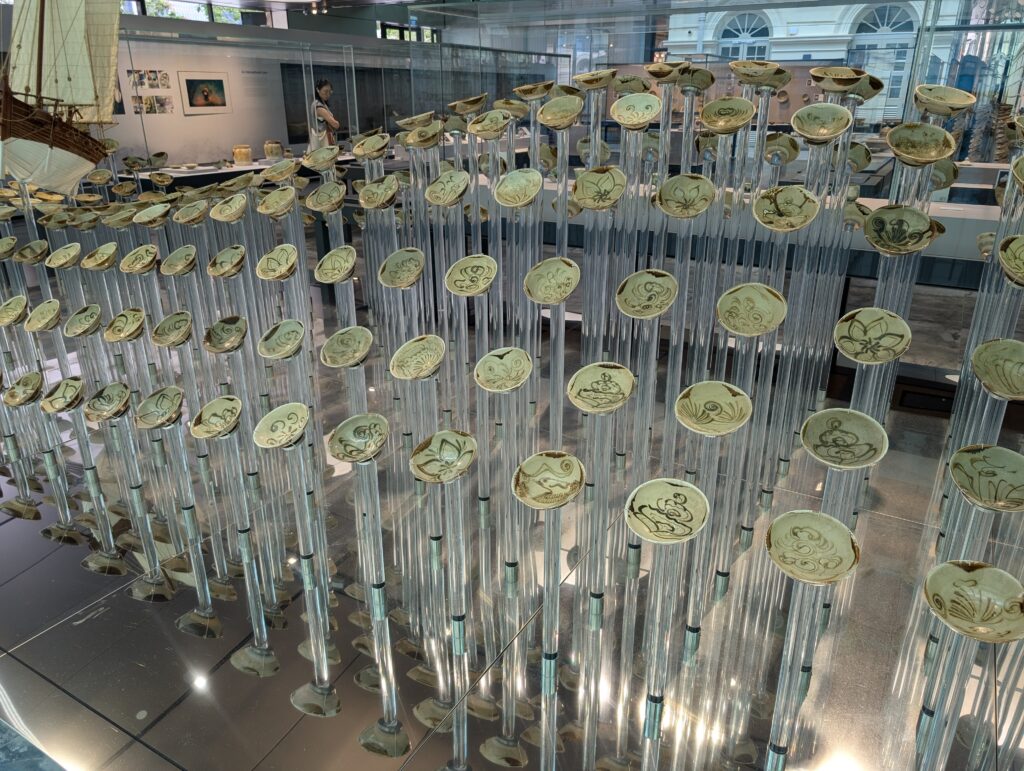

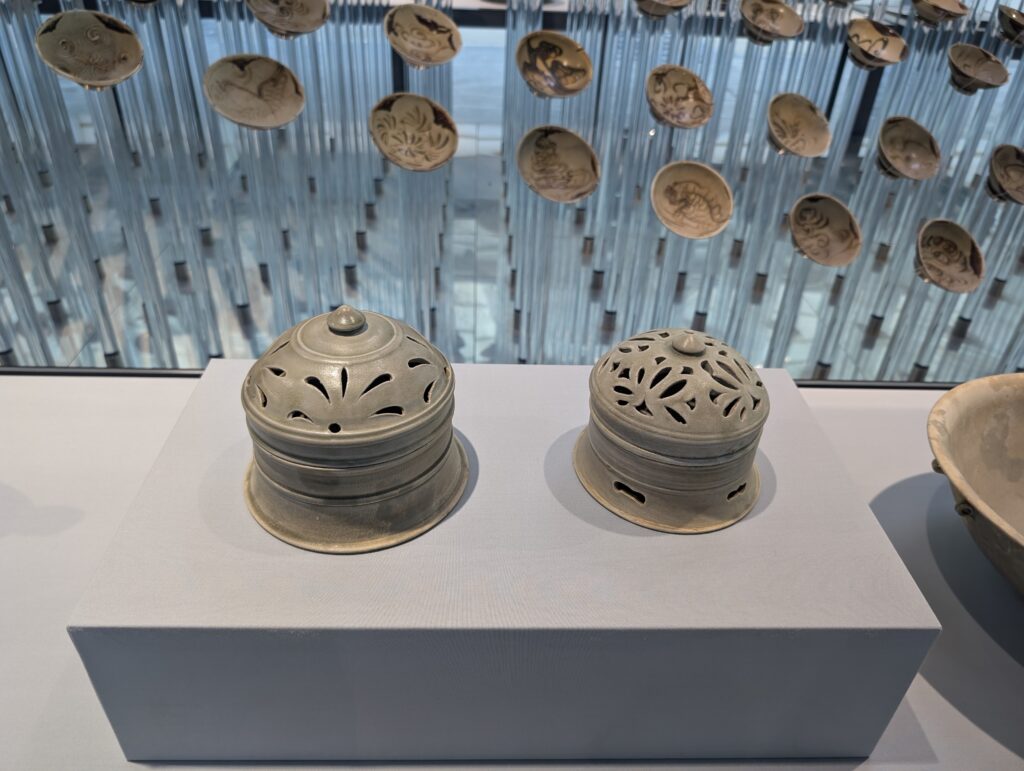
Our final day of the trip was loaded with stops. I got Caleb up at his request so we could maximize our time. We headed first to the Botanical Gardens and National Orchid Garden. This is another very large green space, but a more natural appearing area than the Gardens by the Bay. The palms, ponds, and greenery are beautiful, but the highlight is the orchid garden. I would estimate that there are hundreds of species of orchids in this garden. There are orchids of every color, striped and spotted orchids, moth orchids that look like, well, moths. There are naturally occurring orchids from all over the world, and also hybrids developed specifically for floral show competitions that were developed right in Singapore. These are often named for celebrities or diplomatic visitors. Flower gardens are not really my thing, but I have to admit that the two garden areas we visited in Singapore were mindblowingly beautiful and absolutely worth stopping, even if it isn’t your primary interest.
We do on the other hand love airplanes, especially military planes. I had seen enough air force museums at this point that I didn’t really feel the need to go to Singapore’s but Caleb really wanted to so we went. It was over an hour each way on the metro to get there, but at least the museum was free. It was a small museum that had a dozen or so planes. The emphasis was more on what they had done to support aid and rescue efforts than traditional military action.
The other major museum we had not yet visited covered Asian Civilizations. We missed the guided tours by going to the air museum, but we were able to see several very nice collections. The highlight was a collection of artifacts from a 9th century shipwreck discovered off the coast of Indonesia in 1998. Over 60,000 pieces of pottery and other trade items were recovered. Many of them had not even suffered a chip.
This display was eye opening for me on several counts. The simplified story of the silk and spice trade is that the Far East trade routes went mostly over land until the Ottomans defeated the Byzantine Empire and closed off much of that activity to the West. This drove European explorers and traders to put more effort into searching for sea routes to the Far East. The Portuguese went around Africa, and the Spanish went west. There is a lot of truth to that, but it is a very Western narrative. Just because Italian city states and the Dutch traders weren’t running sea routes to the Far East during the medieval period didn’t mean others weren’t doing it.
The wrecked ship was Arabic, probably from what is now Iran or Iraq. Islamic traders were doing some pretty serious commercial cargo runs to China in the 9th century. The Chinese were mass producing ceramic bowls by then. This means there was enough of a market to drive them to do it, and they had the ability to mass produce similar items. The merchandise was all traded by cash systems instead of barter, another mark of some pretty advanced trade. There was a lot of commerce going on with the Far East, with a significant portion of that happening by sea long before the Portuguese and Dutch arrived on the scene in the Renaissance era.
The museum also housed items from 16th – 19th century shipwrecks. They had various religious artifacts, and a special wing dedicated to pagodas. The most interesting item in the religions section to me was a rubbing from a 7th century stela. This stone from China contained a royal authorization for Christians to operate in China. China was subsequently closed off, as was Japan for several centuries. But this stone showed that there had been evangelists working and planting churches as far east as China long before the Jesuit missionaries who arrived with the Portuguese traders at Macao and Nagasaki.
Our Singapore visit culminated with the aforementioned visit to Lau Pa Sat hawker center. We ate, then strolled through Chinatown looking for souvenirs on the way back to our room. We packed our things in the little backpacks that had housed everything we had with us for the last 100 days. We contemplated going home. Caleb had been a little tired and moody lately, but he seemed sad to be going home. That may have been primarily due to an unwillingness to return to school.
I miss Stephanie, my other family members, and my friends from church for sure. There are also some things about West Texas that I am really looking forward to returning to as well. High school and college football will be fun. I also miss exercising on my bike. That said, it seems as if we left so much undone and unexplored. Three and a half months are not enough to explore the entire world. More than ever, I feel that I just saw the tip of a giant iceberg. The trip served as a sort of sampler plate helping me know some things I’d like to explore more, and a couple I don’t feel like I need to return to. But more than anything, I am left with an even greater sense of all there is about the world that I don’t know. I am home for good. I have not “seen the world.” We have only scratched the surface of all there is to see, do, and learn. We bypassed so many places and things that I know – Lord willing – my travels are far from done.
